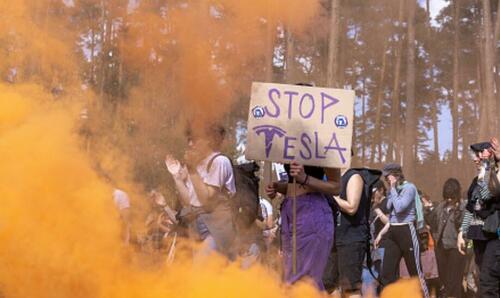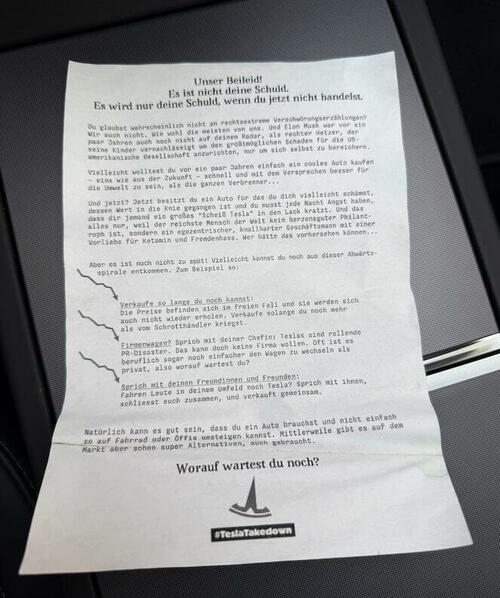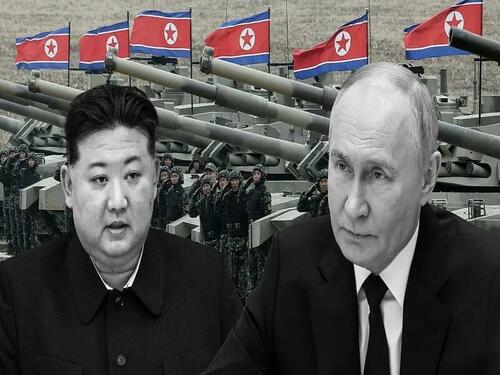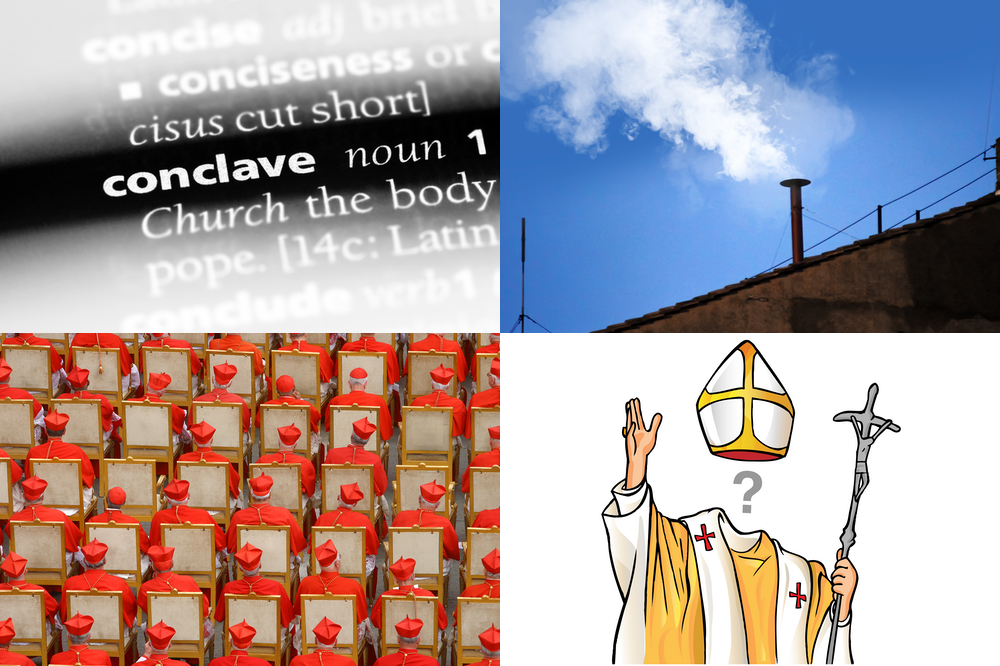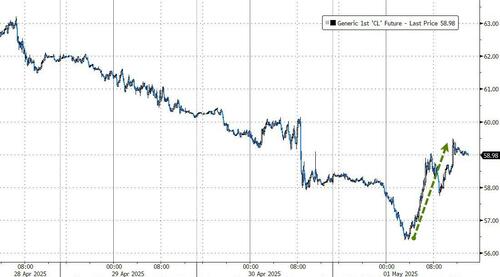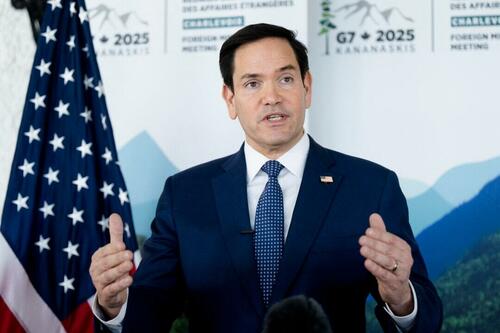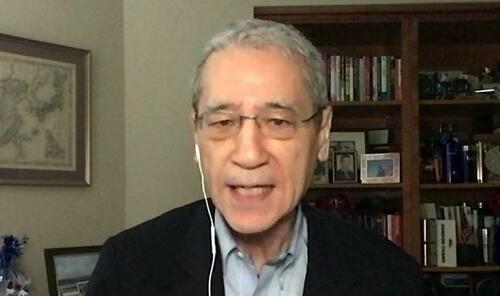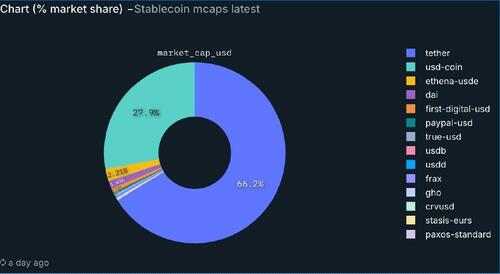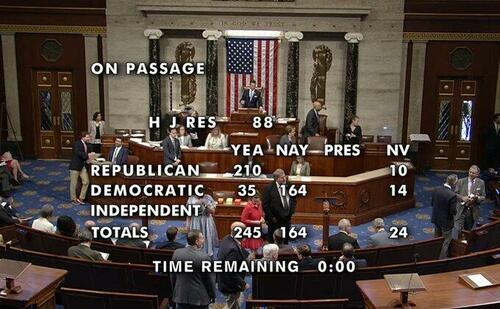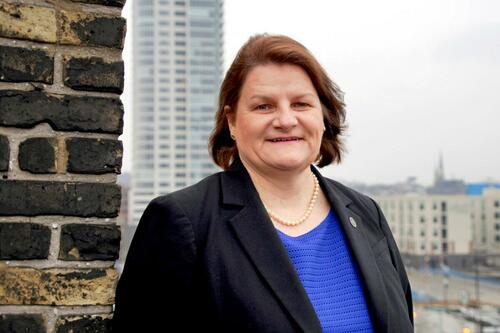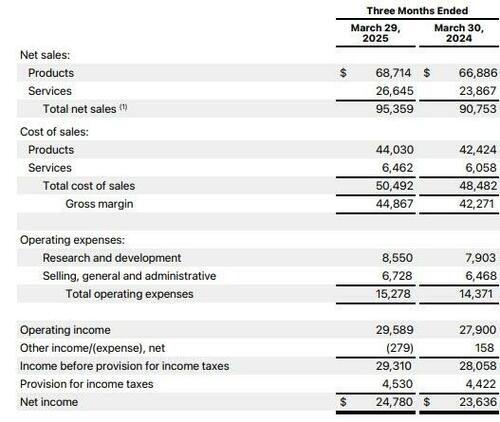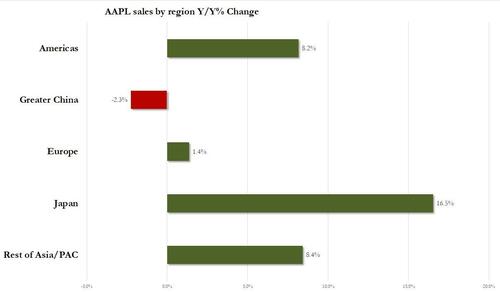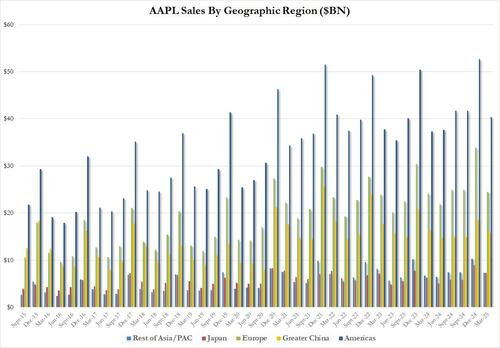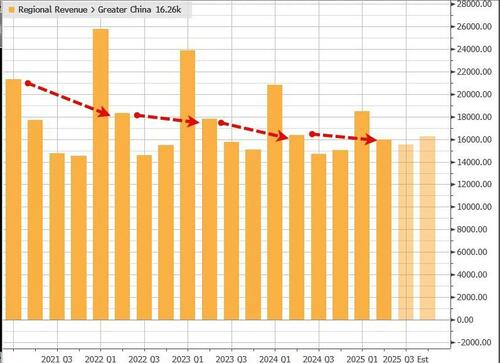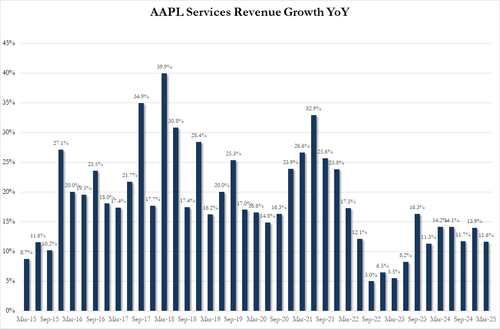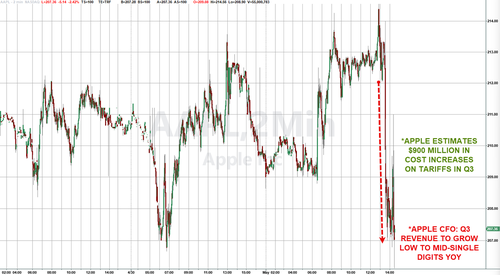“What is perfection in love? Love your enemies in such a way that you would desire to make them your brothers … For so did He love, Who hanging on the Cross, said ‘Father, forgive them, for they know not what they do.’” (Luke 23:34)
Distinction Matter - Subscribed Feeds
-
Site: AsiaNews.itToday's news: Israel continues to bomb Gaza, dozens more dead; UN calls for end to embargo;US-Ukraine agreement on rare earths after Trump and Zelensky meeting in the Vatican;Raids by the Burmese military junta have killed eight more civilians despite the ceasefire;In Delhi, four people have died due to rain and strong winds, which have also disrupted flight operations.
-
Site: Catholic Herald
YAOUNDÉ, Cameroon – Cameroon is continuing to be attacked by the Islamist organization Boko Haram, and the situation is getting worse, according to a bishop.
Bishop Barthélemy Yaouda Hourgo of the Yagoua Diocese in Cameroon’s Far North region, Barthélemy Yaouda Hourgo spoke to Crux about the deteriorating security situation in the area during the 50th Ordinary Plenary Assembly of the Cameroon Bishops’ Conference.
“The current situation of insecurity is worsening,” he said. “I say this because just recently, soldiers were killed only 5 kilometers from my village.”
On March 25, Boko Haram fighters, disguised as herdsmen, launched a deadly assault on a military base in Wulgo, near the Nigerian border. The base, operated by Cameroonian soldiers from the Multinational Joint Task Force, was overrun by the assailants, resulting in the loss of at least 20 soldiers.
According to sources cited by the French news channel Africa 24, the insurgents seized Soviet-made Shilka guns — lightly armored, radar-guided anti-aircraft weapons further escalating the threat.
Yaouda Hourgo expressed concern over the worsening security situation, emphasizing that the terrorist organization is increasingly acquiring sophisticated weaponry.
“Boko Haram now has access to drones,” the bishop told Crux.
“Unfortunately, we are losing soldiers, and the toll on civilians is even more devastating. Civilians who have their cattle in the bush are killed. It’s become part of our daily lives,” he said.
Added to the attacks are the kidnapping of people for ransom.
“Once kidnappers believe you have a little money, they will either come for you, your kids or your wife. They take all these people and they can only be released upon the payment of a ransom,” Yaouda Hourgo explained.
Boko Haram, an extremist group that emerged in Nigeria in 2009, when it launched a violent campaign with the goal of establishing a caliphate across the Sahel.
Initially operating within Nigeria, the group soon expanded its attacks to neighbouring countries — Cameroon, Chad, and Niger — causing widespread devastation. According to the United Nations, Boko Haram has killed at least 40,000 people and displaced more than 2.3 million, leaving countless families in turmoil.
Its activities have severely disrupted livelihoods across the Lake Chad Basin, an area that sustains nearly 40 million people through fishing, farming, and herding. Communities that once relied on these industries now face economic instability, food insecurity, and a continuous threat of violence.
The group’s name, Boko Haram, translates to “Western education is prohibited,” and its radical ideology has led to the closure of many schools across Cameroon and the broader Sahel region.
However, while Boko Haram’s attacks have directly contributed to the decline of education in Cameroon’s Far North, the crisis has been exacerbated by a government that has failed to invest adequately in the region’s children. A lack of resources, infrastructure, and support has left many young people without access to quality education, further deepening the challenges faced by the area.
“I feel deep sadness that the Far North region is always left behind,” Yaouda Hourgo said.
“When I see the disparity in resources — how our children don’t receive the same opportunities as those in Yaoundé, Douala, or Bafoussam — it’s disheartening. If given the same means, they could thrive because there are incredibly intelligent people here,” he said.
“We are not ignorant; in fact, I assure you that the Far North is home to exceptionally bright students. Very, very intelligent young minds. Yet, we face overwhelming challenges. Schools often lack basic necessities — benches, classrooms, even roofs. Imagine a child studying in unbearable conditions. Just last week, I was in Kousséri for a pastoral visit. I met students in a room with a scorching 46-degree [114ºF] temperature. Picture a child trying to learn in a school with no roof. How can they possibly be expected to compete academically with students in better-equipped regions?” Yaouda Hourgo added.
He said both insecurity and poverty have affected the Church in more ways than one and expressed worry that with the dearth of western funding, only faith could keep the Church going in that part of the country.
“The Church is also facing difficult times,” he said.
“For years, Europe has been our primary source of support, but now, it has little to offer. First, there are fewer Christians. Churches are empty, offerings have dwindled, and requests for Mass have declined. Financial aid has virtually disappeared,” he told Crux.
He said that at the level of the Episcopal Conference, there are discussions on how the Church can survive without external support.
“We are searching for ways to sustain ourselves, but independence requires support,” said Yaouda Hourgo.
“If you want to establish a bakery, you need funds to get it started. If you want to engage in farming—something we in the North could certainly do—you still face challenges. In one night, hundreds of sheep could be stolen, jeopardizing the effort,” he admitted.
“Despite these hardships, the Church does not belong to an individual — it belongs to God. That is why it has endured for 2,000 years,” he said.
“Priests and bishops do not receive salaries, yet they continue to live. The financial survival of the clergy depends on the generosity of Christians. It is thanks to you, and to others, that we are able to carry on,” Yaouda Hourgo said.
(CNS Photo)

The post Cameroon faces rising threat from Boko Haram, says bishop first appeared on Catholic Herald.
The post Cameroon faces rising threat from Boko Haram, says bishop appeared first on Catholic Herald.
-
Site: PeakProsperityPremium members may join Chris and Evie for an extended version of the Signal Hour live at 1pm ET.
-
Site: Crisis Magazine

Of all the correspondence compiled by St. Paul documenting salvation through the Event of Jesus Christ—who alone set about redeeming us all because in Adam’s fall we sinned all—the Epistle to the Romans is clearly the lengthiest of them all. It is also the most impressive, easily eclipsing everything else he wrote. “An alpine peak towering over hills and villages,” is how one admiring exegete put…
-
Site: Mises Institute
-
Site: Zero HedgeThe False Claims Of WHO's Pandemic AgreementTyler Durden Fri, 05/02/2025 - 05:00
Authored by David Bell via The Brownstone Institute,
One way to determine whether a suggestion is worth following is to look at the evidence presented to support it.
If the evidence makes sense and smells real, then perhaps the program you are asked to sign up for is worthy of consideration.
However, if the whole scheme is sold on fallacies that a child could poke a stick through, and its chief proponents cannot possibly believe their own rhetoric, then only a fool would go much further. This is obvious – you don’t buy a used car on a salesman’s insistence that there is no other way to get from your kitchen to your bathroom.
Delegates at the coming World Health Assembly in Geneva are faced with such a choice. In this case, the car salesman is the World Health Organization (WHO), an organization still commanding considerable global respect based on a legacy of sane and solid work some decades ago.
It also benefits from a persistent misunderstanding that large international organizations would not intentionally lie (they increasingly do, as noted below). The delegates will be voting on the recently completed text of the Pandemic Agreement, part of a broad effort to extract large profits and salaries from an intrinsic human fear of rare causes of death. Fear and confusion distract human minds from rational behavior.
WHO Likes a Good Story?
The Pandemic Agreement, and the international pandemic agenda it is intended to support, are based on a series of demonstrably false claims:
-
There is evidence of a rising risk of severe naturally occurring pandemics due to a rapid (exponential) increase in infectious disease outbreaks
-
A massive return on financial investment is expected from diverting large resources to prepare for, prevent, or combat these
-
The Covid-19 outbreak was probably of natural origin, and serves as an example of unavoidable health and financial costs we will incur again if we don’t act now.
If any of these were false, then the basis on which the WHO and its backers have argued for the Pandemic Agreement is fundamentally flawed. And all of them can be shown to be false. However, influential people and organizations want pandemics to be the main focus of public health. The WHO supports this because it is paid to.
The private sector invested heavily in vaccines, and a few countries with large vaccine and biotech industries now direct most of the WHO’s work through specified funding. The WHO is obligated to deliver what these interests direct it to.
The WHO was once independent and able to concentrate on health priorities – back when they prioritized the main drivers of sickness and premature mortality and gained the reputation they now trade from. In today’s corporatized public health, population-based approaches have lost value, and the aspirations of the World Economic Forum hold more sway than those dying before sixty.
Success in the health commodities business is about enlarging markets, not reducing the need for intervention. The WHO and its reputation are useful tools to sanitize this. Colonialism, as ever, needs to appear altruistic.
Truth Is Less Compelling Than Fiction
So, to address these fallacies. Infectious disease mortality has steadily declined over the past century despite a minor Covid blip that took us back just a decade. This blip includes the virus, but also the avoidable imposition of poverty, unemployment, reduced healthcare access, and other factors that the WHO had previously warned against, but recently actively promoted.
To get around this reality of decreasing mortality, the WHO uses a hypothetical disease (Disease X), a placeholder for something that has not happened since the Spanish flu in the pre-antibiotic era. The huge Medieval pandemics such as the Black Death were mostly bacterial in origin, as were probably most Spanish flu deaths. With antibiotics, sewers, and better food, we now live longer and don’t expect such mortality events, but the WHO uses this threat regardless.
Thus, the WHO has been reduced to misrepresenting fragile evidence (e.g. ignoring technology developments that can explain rising reports of outbreaks) and opinion pieces by sponsored panels in order to support the narrative of rapidly rising pandemic risk. Even Covid-19 is getting harder to use. If, as appears most likely, it was an inevitable result of laboratory manipulation, then it no longer even serves as an outlier. The WHO’s pandemic agenda is squarely targeted at natural outbreaks; hence the need for “Disease X”.
The WHO (and the World Bank) follow a similar approach in inflating financial Return on Investment (ROI). If you received an email promoting over 300 to 700 times return on a proposed investment, some may be impressed but sensible people would suspect something amiss. But this is what the Group of Twenty (G20) secretariat told its members in 2022 for return on investment on the WHO’s pandemic preparedness proposals.
The WHO and the World Bank provided the graphic below to the same G20 meeting to support such astronomical predictions. It is essentially subterfuge; a fantasy to mislead readers such as politicians who are too busy, and trusting, to dig deeper. As these agencies are intended to serve countries rather than fool them, this sort of behavior, which is recurrent, should call into question their very existence.
Figure 1 from Analysis of Pandemic Preparedness and Response (PPR) architecture, financing needs, gaps and mechanisms, prepared by WHO and the World Bank for the G20, March 2022. Lower chart modified by REPPARE, University of Leeds.
A virus like SARS-CoV-2 (causing Covid-19) that mostly targets the sick elderly with an overall infectious mortality rate of about 0.15% will not cost $9 trillion unless panicked or greedy people choose to close down the world’s supply lines, implement mass unemployment, and then print money for multi-trillion-dollar stimulus packages. In contrast, diseases that regularly kill more and much younger people, like tuberculosis, malaria, and HIV/AIDS, cost far more than $22 billion a year in contrast.
A 2021 Lancet article put tuberculosis losses alone at $580 billion/year in 2018. Malaria kills over 600,000 children annually, and HIV/AIDS results in similar numbers of deaths. These deaths of current and future productive workers, leaving orphaned children, cost countries. Once, they were the WHO’s main priority.
Trading on a Fading Reputation
In selling the package, the WHO seems to have abandoned any attempt at meaningful dialogue. They still justify the surveillance-lockdown-mass vaccinate model by the logic-free claim that over 14 million lives were saved by Covid vaccines in 2021 (so we all have to do that again). The WHO recorded a little over 3 million Covid-related deaths in the first (vaccine-free) year of the pandemic. For the 14 million ‘saved’ to be correct, another 17 million would somehow have been due to die in year two, despite most people having gained immunity and many of the most susceptible having already succumbed.
Such childish claims are meant to shock and confuse rather than educate. People are paid to model such numbers to create narratives, and others are paid to spin them on the WHO websites and elsewhere. An industry worth hundreds of billions of dollars depends on such messaging. Scientific integrity cannot survive in an organization paid to be a mouthpiece.
As an alternative, the WHO could advocate for investment in areas that promoted longevity in wealthy countries – sanitation, better diet and living conditions, and access to basic, good medical care.
This was once the WHO’s priority because it not only greatly reduces mortality from rare pandemic events (most Covid deaths were in people already very unwell), but it also reduces mortality from the big endemic killers such as malaria, tuberculosis, common childhood infections, and many chronic non-communicable diseases. It is, unequivocally, the main reason why mortality from major childhood infectious diseases like measles and Whooping cough plummeted long before mass vaccinations were introduced.
If we concentrated on strategies that improve general health and resilience, rather than the financial health of the pandemic industrial complex, we could then confidently decide not to wreck the lives of our children and elderly if a pandemic did arise.
Very few people would be at high risk. We could all expect to live longer and healthier lives. The WHO has elected to leave this path, instill mass and unfounded fear, and support a very different paradigm. While the Pandemic Agreement is not essential to it, it is an important part of diverting further funds to this agenda and cementing this corporatist approach into place.
The United States has done well by stepping out of this mess, but continues to push many of the same fallacies and was instrumental in sowing the mess we now reap. While a few other governments are questioning, it is hard for any politicians to stand with truth when a sponsored media stands squarely elsewhere.
Society is once more enslaving itself, at the behest of an entitled few, facilitated by international agencies that were set up specifically to guard against this. At the coming World Health Assembly, the pandemic fairytale will almost certainly prevail.
The hope is that a well-deserved erosion of trust will eventually catch up with the global health industry and too few countries will ratify this treaty for it ever to come into force. To fix the underlying problem though and derail the pandemic industry train, we will need to rethink the whole approach to cooperation in international health.
-
-
Site: Zero HedgeRadio Liberty Let The Cat Out Of The Bag Regarding The EU's Game Plan For UkraineTyler Durden Fri, 05/02/2025 - 03:30
Authored by Andrew Korybko via substack,
Russia can expect nothing in return from the EU if Putin concedes to allow their troops and aircraft to deploy in and patrol over Western Ukraine...
Russia has long warned that any unconditional ceasefire in Ukraine of the 30-day sort that Zelensky has proposed could create an opening for NATO to expand its military influence in that country. Hitherto dismissed as a conspiracy theory by the West, Radio Liberty just let the cat out of the bag. The unnamed officials who they cited in their recent article confirmed that they envisage this “buy[ing] the Europeans time to assemble a ‘reassurance force’ in the Western part of Ukraine” and organize “air patrols” there.
Their reported game plan is “keeping the Americans onboard” the peace process, “sequencing” the conflict by clinching a ceasefire that’ll later lead to a lasting peace, and using the aforesaid interim period to carry out the abovementioned military moves for pressuring Russia into more concessions.
What’s omitted from Radio Liberty’s article is that Russia has threatened to target Western troops in Ukraine, who Secretary of Defense Pete Hegseth earlier said wouldn’t enjoy Article 5 guarantees from the US.
Even if Putin agrees to this concession that’s assessed to be among one of the five significant differences between him and Trump that prompted Trump’s angry post against Putin, Radio Liberty reported that this still wouldn’t lead to de jure European recognition of Russia’s territorial gains.
The same goes for them lifting sanctions or returning any of its €200 billion of seized assets. More sanctions might even soon be imposed and the windfall profits from those assets will “bankroll Ukraine’s military needs”.
Given what Radio Liberty revealed, Russia can therefore expect nothing in return from the EU if Putin concedes to allow their troops and aircraft to deploy in and patrol over Western Ukraine. Any hopes of restoring Ukraine’s antebellum buffer state status would be crushed, and it can’t be ruled out that the EU’s zone of military activity could later expand to the Dnieper or beyond. One of the special operation’s goals was to prevent the West’s eastward military expansion so that would be another major concession.
Putin’s decades-long close friend and influential senior aide Nikolay Patrushev just told TASS earlier this week that “For the second year in a row, NATO is holding the largest exercises in decades near our borders, where it is practicing scenarios of offensive actions over a large area - from Vilnius to Odessa, the seizure of the Kaliningrad region, the blocking of shipping in the Baltic and Black Seas, and preventive strikes on the permanent bases of Russian nuclear deterrent forces.”
Secretary of the Security Council Sergey Shoigu told the same outlet several days prior that “Over the past year, the number of military contingents of NATO countries deployed near the western borders of the Russian Federation has increased almost 2.5 times…NATO is moving to a new combat readiness system, which provides for the possibility of deploying a 100,000-strong group of troops near the borders of Russia within 10 days, 300,000 by the end of 30 days, and 800,000 by the end of 180 days.”
When the EU’s prioritization of the Baltic Defence Line and Poland’s complementary East Shield are added to the equation, coupled with plans for expanding the “military Schengen” to speed up the eastward deployment of troops and equipment, the trappings of Operation Barbarossa 2.0 are apparent. Putin can’t influence what NATO does within the bloc’s borders, but he has the power to stop its de facto expansion into Western Ukraine during a ceasefire, which could partially hinder its speculative plans.
Conceding to them, which he might agree to do for the five reasons mentioned in the second half of this analysis here from early March, would lead to Russia’s mutual defense ally Belarus being surrounded by NATO along its northern, western, and then southern flanks. That could make it a tempting future target, but Western aggression might be deterred by the continued deployment of Russia’s Oreshniks and tactical nuclear weapons, the latter of which Belarus has already been authorized to use at its discretion.
Conceding to Western troops in Ukraine in exchange for the economic and strategic benefits that Russia hopes to reap from the US if their nascent “New Détente” takes off after a peace deal would therefore entail conventional security costs that could be managed through the means that were just described. At the same time, however, hardliners like Patrushev, Shoigu, and honorary chairman of Russia’s influential Council on Foreign and Defense Policy Sergey Karaganov could dissuade him from such a deal.
Putin must therefore decide whether this is an acceptable trade-off or if Russia should risk losing its post-conflict strategic partnership with the US by continuing to oppose NATO’s de facto expansion into Western Ukraine, including via military means if EU forces move into there without Russian approval. His decision will determine not only the future of this conflict, but also Russia’s contingency planning vis-à-vis a possible hot war with NATO, thus making this the defining moment of his quarter-century rule.
-
Site: RT - News
President Donald Trump previously said his administration is in contact with Beijing over the tariff dispute, which China has denied
China is “assessing” US overtures to begin tariff negotiations, the Commerce Ministry said on Friday. According to the ministry, senior US officials recently reached out to Beijing through third parties with proposals to start talks.
Tensions between the world’s two largest economies have risen since US President Donald Trump imposed 145% tariffs on Chinese imports last month as part of a wider effort targeting over 90 trade partners. Most of the new tariffs were paused for 90 days – excluding China – while a baseline 10% remains in place. Beijing responded with 125% tariffs on US goods and export restrictions.
The ministry said China has taken note of recent US messages and is evaluating the possibility of negotiations, adding that while Washington has expressed interest in talks, trust would be undermined if unilateral tariffs remain.
“The US has recently sent messages to China through relevant parties, hoping to start talks with China. China is currently assessing this,” the ministry stated.
Read more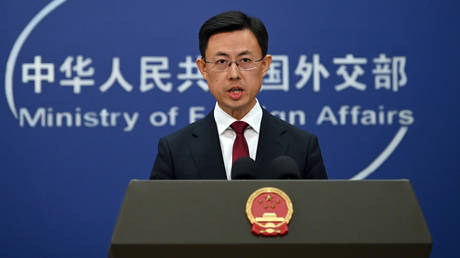 China denies Trump’s Xi call claim
China denies Trump’s Xi call claim
Trump previously suggested that the tariffs could “come down substantially” and spoke about the potential for a “fair deal with China.” He also claimed that his administration was “actively” engaging with Beijing and that he had spoken to Chinese President Xi Jinping by phone.
Secretary of State Marco Rubio claimed on Fox News last week that Beijing was “reaching out” to Washington. China has denied this and accused the US of misleading the public.
In its statement on Friday, the Commerce Ministry reiterated that the US must show “sincerity” by canceling the tariffs if it wants meaningful dialogue. It added that China remains open to talks, but will not be pressured: “If we fight, we will fight to the end; if we talk, the door is open.”
It stressed that Beijing will only agree to negotiations in good faith. “Saying one thing and doing another, or even trying to coerce and blackmail under the guise of talks, will not work with China,” the statement read.
READ MORE: Trump ‘blundered’ on China tariffs – Medvedev
Analysts expect negotiations will begin soon, citing recent market volatility and the IMF’s downward revision of global growth forecasts due to trade uncertainty. Some observers, however, predict that formal talks will not be announced until after the US and China agree on the terms of a tariff deal privately.
-
Site: Mises Institute
-
Site: Zero HedgeWhere Malaria Has Been Successfully EradicatedTyler Durden Fri, 05/02/2025 - 02:45
As Statista's Anna Fleck shows in the chart below, a total of 45 countries and one territory had managed to eradicate malaria as of January 2025, according to data from the World Health Organization.
You will find more infographics at Statista
A place is eligible to apply for a WHO certification of malaria-free status once it has had zero indigenous cases of malaria for three consecutive years.
In 2025 so far, Georgia is the latest country to have met this requirement, following after Egypt and Cape Verde last year.
The United States was declared malaria-free in 1970, alongside Italy and the Netherlands.
Meanwhile, India still is endemic with more than two million cases reported there in 2023.
Worldwide, malaria is still endemic in 83 countries.
-
Site: Catholic Herald
It has been four years since a small Indigenous Band in British Columbia, Canada announced that the remains of 215 children had been discovered on the grounds of the former Kamloops Indian Residential School (IRS). It has been nearly 10 years since the Truth and Reconciliation Commission (TRC) released its final report. The intervening years, however, have left most Canadians scratching their heads and asking the same querulous question as Pontius Pilate, “What is truth?”
By some metrics, it might appear that Canada has moved on from the moral panic that followed the bombshell press release. Chief Rosanne Casimir would later qualify that what had been identified by ground-penetrating radar (GPR) technology were not 215 “remains” but 200 “potential burials;” despite the provision of $12.1 million for field work and exhumation of remains, no remains have ever been recovered.
The government funding streams and commissions are now coming to an end. The “Residential Schools Missing Children Community Support Fund,” $217 million (₤ 117.6 million) dispersed to 150 Indigenous communities, was wrapped up in March 2025. In the same month, the National Advisory Committee on Residential Schools, Missing Children and Unmarked Burials was disbanded.
A month earlier, Parks Canada announced that the site of the former Kamloops Residential School would become the fifth former IRS to be designated a national historic site. Though the press statement called the school the “largest institution in a system designed to carry out what the Truth and Reconciliation Commission described as cultural genocide,” no mention was made of unmarked or mass graves.
But despite the hasty dismantling of the hastily erected bureaucratic structures, the assumptions and prejudices, even the so-called facts, of that period have become embedded into the national consciousness and are now almost impossible to root out.
Despite the “not one body” refrain echoed in international and independent media, mainstream journalists, politicians and activists continue to speak as if it is still May 2021.
Just recently, the CBC had to issue a correction after its chief political correspondent Rosemary Barton said on air, “there have been remains of Indigenous children found in various places across the country.”
In an electoral riding of 100,000 people, a petition calling for the removal of Conservative candidate Aaron Gunn has garnered close to 20,000 signatures. His mistake was to state on social media that the residential school system did not constitute a genocide.
The conversation has now shifted away from mass graves, of which there were none, to the denouncement and criminalisation of something called “residential school denialism.”
In June 2022, then Minister of Justice and Attorney General David Lametti created the Office for the Independent Special Interlocutor (OISI) for Missing Children and Unmarked Graves and Burial Sites associated with Indian Residential Schools.
Lametti appointed Kimberly Murray, a lawyer and former TRC executive director, as special interlocutor. With a $10.4 million budget, the office had a mandate to identify legal barriers to the search of unmarked graves.
In a June 2022 interview with CTV News, Murray said she expected to have conversations with survivors and Indigenous leadership around legal recourse in the matter of jurisdiction over unmarked graves and suspected untimely deaths of children.
What started as the examination of legal frameworks to aid Indigenous communities in their search for so-called missing children, ended in the creation an entirely new “reparations” framework.
In Oct. 2024, after two and a half years of work, Murray released a two-volume report that focused more on denialism than the identification of unmarked graves.
The executive summary of the Indigenous-led Reparations Framework uses the term “denialism” 50 times and “genocide” 72 times. The report repeatedly asserts that what occurred in Indigenous residential schools was genocide.
The summary calls for reparations for the families of residential school students, an Indigenous-led national commission with a 20-year mandate to investigate missing children associated with residential schools, and for the government to refer to missing children as victims of “enforced disappearance.”
It is important to note that former residential school students were the beneficiary of the largest class action settlement in Canadian history. Settled in 2006, some $3.180 billion in payments were approved, the average being $111,265.
The report also recommends the amendment of both Canada’s Criminal Code and Bill C-63: An Act to Enact the Online Harms Act to make residential school denialism an imprisonable offence. A month earlier, NDP MP Leah Gazan introduced Bill C-413: An Act to amend the Criminal Code (promotion of hatred against Indigenous peoples).
Denialism is defined in the report as “condoning, denying, downplaying, or justifying the Indian Residential School System or by misrepresenting facts relating to it…. It is not the existence of the Indian Residential School System that is being denied: it is the intent, outcomes, and impacts of the System.”
At the National Gathering on Unmarked Graves, the two-day conference at which the OISI report was presented, speakers were seated on a raised stage. At the front was placed a display of Indigenous objects: cradleboards, moccasins, and in the middle, a drum with the number “215” at the center. It was a curious choice. By Oct. 2024, it had been years since Chief Casimir had qualified it was 200 “anomalies” not 215 “remains.”
I asked Noah MacDonald, Archdiocese of Toronto canon lawyer and member of the Michipicoten First Nation, why he thought the number 215 had moved beyond a data point to an emotive symbol.
“I see hanging on to those symbols and language because it’s reminiscent of a moment in Canadian history when Indigenous people were believed. The whole world paid attention to the million problems we’ve been trying to express.”
The report stresses the truth of residential schools is to be found solely in the memories of survivors, including accounts of babies conceived in rape being murdered.
“Survivors attest to the bodies of babies being placed in incinerators at Indian Residential Schools. These testimonies and oral history evidence hold veracity and truthfulness given the extent of corroboration and repetition among Survivors of the same institution and across many different Indian Residential Schools in the country.”
When I questioned MacDonald on this focus upon memory, rather than data, he responded that for many Indigenous communities it was important to focus less on the “implicit facts, but more on the spirit of truth.”
“Regardless of whether a baby was incinerated there, the souls and the persons of young indigenous children were incinerated there, incinerated by this process of assimilation.”
Indigenous communities and opinion are, of course, not a monolith.
Eight days before the OISI report was published, Fr. Cristino Bouvette, priest of the Diocese of Calgary, sat down with YouTuber and Catholic speaker Ken Yasinski, for a conversation on the “mass graves controversy.”
Of mixed Cree, Métis and Italian heritage, Bouvette has the credentials to speak to so-called residential school denialism. His grandmother attended the Edmonton Indian Residential School for 12 years. Chosen to act as the National Liturgical Coordinator for the visit of Pope Francis to Canada in 2022, Bouvette says he has “spent the last four years of my life and ministry completely consumed” by the question of reconciliation.
Bouvette told Yasinski: “This is something I feel very confident I can stand in the face of… the whole concept of residential school denialism. How can I deny what my grandmother lived through? Who can accuse me of denying that?”
“Asking questions isn’t denying anything,” said Bouvette. “If we are not seeking the truth, if we are not trying to understand all of what surrounds what’s happened here, we will never get anywhere. What’s the point of a Truth and Reconciliation Commission if we leave the truth off? You can’t have reconciliation without truth.”
Many Indigenous argue the term “denialist” is less than helpful.
Aaron Pete is a podcaster based in Chilliwack, B.C. and a Chawathil First Nation Councillor whose grandmother attended St. Mary’s Indian Residential School in Ontario.
Pete finds the word “denialist” to be “a very unproductive term.”
“The ‘Mass Graves Story’ as told by the CBC needs to be a separate conversation from the history of the residential schools told in the Truth & Reconciliation Commission Report,” Pete told me in a phone interview.
Some see broader concerns with the language of denialism applied to the Canadian situation. Barbara Kay, columnist for the National Post, is concerned with the appropriation of the language of the Holocaust, specifically denialism, for the Indian Residential Schools. Kay told me IRS denialism seems to mean something different than Holocaust denialism, which means denying “that the records are correct, that the proofs are proof, that the pictures and the photographs are true.”
“You can’t compare denialism of evidence to denialism of a thought or a belief,” said Kay.
Unfortunately, on the fourth anniversary of the Kamloops announcement, it is the Pontius Pilate question that echoes through Canada.
In the words of Noah MacDonald, “It may come down to different understandings of what truth is. Is truth empirical fact or is truth the spirit of truth?”
(Kukpi7 Chief, Rosanne Casimir, of Tk’emlúps te Secwépemc poses at the site of a makeshift memorial at the former Kamloops Indian Residential School in Kamloops, Canada. Photo by COLE BURSTON/AFP via Getty Images)

The post How does the failure to find any Canadian mass graves justify a crime of ‘denialism’? first appeared on Catholic Herald.
The post How does the failure to find any Canadian mass graves justify a crime of ‘denialism’? appeared first on Catholic Herald.
-
Site: Zero Hedge"Every Night, Be Afraid!" - Tesla Owners Targeted By Left-Wing Activists In ViennaTyler Durden Fri, 05/02/2025 - 02:00
Authored by Thomas Brooke via Remix news,
Tesla owners in Vienna are increasingly finding threatening flyers placed on their vehicles, warning them of potential vandalism and public backlash if they do not sell their cars.
The notes, which have appeared on multiple vehicles in recent days, are part of an apparent campaign by left-wing extremists who have made Tesla — and its CEO, Elon Musk — a target due to his political positions and support for populist parties across Europe.
One flyer, titled “Our condolences! It’s not your fault. It will only be your fault if you don’t act now”, warns Tesla owners that they are driving a vehicle associated with “right-wing agitator” Elon Musk.
The note urges drivers to sell their cars while they still can, hinting at consequences such as public shaming and criminal damage to the vehicle.
The leaflet reads: “Now you own a car that you may be ashamed of, whose value has gone to its knees and you have to be afraid every night that someone will scratch a big ‘fuck Tesla’ into your paintwork.”
The document continues with suggestions such as speaking to employers about removing Tesla vehicles from company fleets, and even discussing the matter with friends and family in an effort to ostracize the brand.
The campaign is not limited to Vienna. Similar anti-Tesla actions have been reported in several other European cities. In Berlin and Paris, Teslas have been defaced with spray paint and stickers labeling drivers as supporters of “right-wing conspiracy.” In Amsterdam, demonstrators have held protests outside Tesla garages and engaged in confrontations with drivers, calling their cars “capitalist machines” and demanding they abandon them.
In March, an arson attack that knocked out power to a Tesla factory and parts of Berlin was claimed by a left-wing terror group.
“Together, we are bringing Tesla to its knees. Switch off for Tesla. Greetings to everyone on the run, in the underground in prisons and in the resistance! Love and strength to all Antifa,” read a letter by the perpetrators published in the German media.
The vandalism is, in part, fueled by left-wing politicians who have made inflammatory remarks about Musk and his company.
In January, after Musk endorsed the Alternative for Germany (AfD) ahead of the country’s federal elections, Poland’s Sports Minister Sławomir Nitras said, “I can only say this much, listening to these words: Probably no normal Pole should buy a Tesla anymore.”
Berlin Senator Cansel Kiziltepe, of the Social Democratic Party (SPD), went further earlier this week, comparing Tesla to “Nazi cars.”
“Who wants to drive a Nazi car? Manufacturers of electric cars are experiencing a sales boom – apart from Tesla,” she said.
Authorities in Vienna have not yet commented on the distribution of these flyers, but some Tesla owners have expressed concern for their safety and the security of their property, according to Austrian news outlet Exxpress.
-
Site: The Unz ReviewOne of the funnier episodes after Trump’s tariff war with China was when his Commerce Secretary, the sycophant Howard Lutnick who made his fortune at some Wall Street brokerage, went on TV to talk about the beautiful future to be ushered in – “"The army of millions and millions of human beings screwing in little...
-
Site: The Unz ReviewI know that those who read my articles will be interested to learn that President Donald Trump has appointed Martin Marks to be his administration’s liaison to the American Jewish community with the title Special Assistant to the President and Director of Jewish Engagement in the White House Faith Office. Marks, whose mother handbag designer...
-
Site: The Unz ReviewMy mom had an uncanny ability to size up current events and accurately predict their long-term effects. Fifty years ago, I sat in my mom's colonial dining room and watched the fall of Saigon on her black-and-white TV with two folds of aluminum foil dangling from the rabbit ears. America was not riding high. A...
-
Site: The Unz ReviewIt should be obvious though apparently it isn’t: none of the things that are happening actually even matter to the individual, because the future is already written, at least in the ways that will have any significant impact on the individual. It’s possible that there are various alternative outcomes. I don’t really believe it, but...
-
Site: The Unz Review
-
Site: The Unz ReviewOne of the world’s, oldest and most dangerous conflicts went critical this past week as nuclear armed India and Pakistan traded threats of war. The Kashmir conflict is the oldest one before the UN. In my book `War at the Top of the World’ I warned that the confrontation over Kashmir, the beautiful mountain state...
-
Site: AntiWar.comIt is quite possible to take apart virtually any report in the Guardian on Gaza – as I have done with a story in today’s paper – and identify the same kinds of journalistic malpractice. Further, I could have taken any paragraph in the article and parsed it in much the same way as I … Continue reading "The Drip-Drip of Slanted Gaza Reporting Erodes Our Sense of Right and Wrong"
-
Site: The Unz ReviewPerhaps the most divisive debate within white advocacy is over optics. To care about appearance and conduct may seem cowardly when we are in a fight for our survival. On the other hand, politics — changing people’s minds — is about optics. A poll can have vastly different results depending on the wording, and political...
-
Site: The Unz ReviewRumble link Bitchute link Academic freedom icon Prof. Anthony Hall discusses his new article "Canadian Liberals Deploy Trump Derangement Syndrome to Retain Federal Power." According to Hall: "It turns out that Trump and Carney share many networks of colleagues and associates. One of most significant connections was when Carney’s Brookfield Assets management venture intervened with...
-
Site: The Unz ReviewThe Trump tariffs are one part of a multi-pronged strategy aimed at preventing China from becoming the dominant power in Asia. The military component of this strategy is designed to work in sync with the trade war by encircling China with military bases and hostile neighbors that have enlisted in Washington's anti-China alliance. The author...
-
Site: Zero HedgeTrump Demands Sisi Give US Ships Free Passage Through Suez, Support Against HouthisTyler Durden Thu, 05/01/2025 - 23:50
US President Donald Trump asked his Egyptian counterpart, Abdel Fattah el-Sisi, for American ships to enjoy free passage through the Suez Canal in an April phone call, as the US presses ahead with its bombing campaign against the Houthis in Yemen.
Trump has made no secret of his belief that US vessels should transit the strategic waterway for free. On Saturday, he publicly demanded as much, saying the canal "would not exist without the United States of America." One Egyptian MP was reported as characterizing the Trump administration's moves as blackmail and rubbished Trump's claim about the canal's existence, saying it was "purely Egyptian".
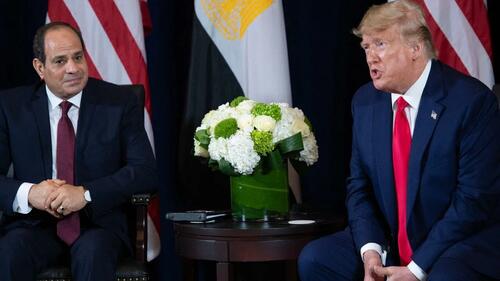 Via AFP
Via AFP
The Wall Street Journal reported on Tuesday that Trump raised the issue with Sisi directly this month. The two leaders spoke on April 1.
An Egyptian readout of the call stated that the two leaders "discussed developments in the Middle East and mediation efforts to restore calm to the region, which reflects positively on navigation in the Red Sea."
At the end of 2024, Egypt’s presidential office said the country had lost at least $7bn in Suez Canal revenue.
According to The Wall Street Journal, Trump told Sisi the US wanted Egyptian support for its campaign against the Houthis, including military assistance, intelligence sharing and funding, because the US bombing campaign would help to restore traffic through the Red Sea and Suez Canal. Sisi sidestepped the request and told Trump the best way to address the Houthi threat was a ceasefire in Gaza.
The conversation dovetails with Trump’s public messaging on the Suez Canal. His reasoning also aligns with that of private discussions between US senior officials, as revealed in a leaked Signal group chat earlier this year.
"As I heard it, the president was clear: green light, but we soon make clear to Egypt and Europe what we expect in return," one person identified in a group chat started by national security advisor Mike Waltz was revealed as saying in The Atlantic.
The person was identified as SM, which appears to refer to Trump adviser Stephen Miller. "If the US successfully restores freedom of navigation at great cost, there needs to be some further economic gain extracted in return," the Signal user said.
Trump’s demand for Egypt to provide military support or economic assistance to the US is a stark reversal in the two countries' post-war relationship, which usually has it the other way around.
The US brokered the 1979 peace treaty between Israel and Egypt. Since then, the US has provided roughly $1.3bn in military aid to Egypt. But ties between Egypt and the US have been dented by Israel’s war on Gaza. US diplomats in Cairo have tried to dissuade the Trump administration from pressing Egypt to accept forcibly displaced Palestinians, Middle East Eye reported previously.
Egyptian officials are already simmering with anger at the US for siding with Israel when the latter seized Gaza’s southern city of Rafah in May 2024 and accused Egypt of being negligent in policing the border.
MEE revealed in March that the UAE, a close patron of Egypt, was lobbying the Trump administration against a plan that Cairo introduced to the Arab League for post-war governance of the Gaza Strip.
According to US and Egyptian officials, the US has told Egypt it is considering cutting military aid. The officials say the threat to cut aid stems from frustration within Trump’s inner circle that Egypt has refused to accept forcibly displaced Palestinians.
#US aircraft carriers pass through the Suez Canal... without fees and #Egyptians watch and cannot do much. #Trump said he won't pay. https://t.co/Hyz0mVfMpu
— Observer (@nasermoh29) May 1, 2025Trump’s call for Sisi to support the US bombing campaign against the Houthis is not the first time Sisi has had to resist appeals to become involved in Yemen. Egypt was one of the first countries to leave a Saudi-led coalition that was bombing the Houthis in 2016.
Egypt has a long history in Yemen, and the Arabian Gulf country is often equated to Egypt’s “Vietnam” by Arab officials - a play on the US’s gruelling war in Asia. During the 1960s, Egyptian President Gamal Abdel Nasser intervened in Yemen’s civil war, backing so-called Republicans against Royalists.
-
Site: RT - News
Prime Minister Benjamin Netanyahu has said the strikes are a warning against violence toward the Druze community
Israel said on Friday that it conducted airstrikes near the presidential compound in Syria, in response to violence against the Druze minority.
“A short while ago, warplanes attacked the area near Ahmed Hussein al-Sharaa’s palace in Damascus,” the Israel Defense Forces (IDF) said in a brief statement.
Al-Sharaa, also known as Abu Mohammad al-Julani, led a coalition of Islamist forces that toppled President Bashar Assad in December 2024. The rapid seizure of the capital and other cities in western Syria was accompanied by massacres of Druze, Christians, and Assad loyalists.
According to Al Jazeera, clashes erupted on Monday in the towns of Jaramana and Sahnaya south of Damascus after an audio clip circulated on social media in which a man criticized the Prophet Mohammed. The recording was attributed to a Druze scholar, who has denied responsibility.
Read more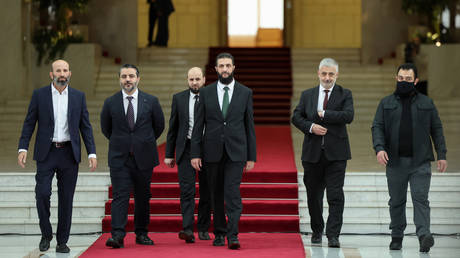 100 days without Assad. Is Syria any better?
100 days without Assad. Is Syria any better?
Prime Minister Benjamin Netanyahu and Defense Minister Israel Katz issued a joint statement on Friday, describing the IDF strikes as “a clear message to the Syrian regime.” They added: “We will not allow forces to be sent south of Damascus or any threat to the Druze community.”
Syria’s state-run news agency, SANA, reported on Thursday that order had been restored in Sahnaya following the deployment of security forces. The Syrian Foreign Ministry condemned what it called “attempts to internationalize the situation,” and vowed to protect the Druze population.
The Druze are a minority religious group that follows an offshoot of Islam and make up around 3% of Syria’s population. Some Druze in southern Syria have reportedly asked for Israeli protection, calling it the “lesser evil.”
The IDF invaded southwestern Syria shortly after Assad’s downfall in December, occupying several towns beyond the Golan Heights, including Quneitra.
-
Site: Zero HedgeWhy Did Russia Officially Acknowledge North Korea's Military Assistance In Kursk?Tyler Durden Thu, 05/01/2025 - 23:00
Authored by Andrew Korybko via substack,
Russia wants the world to know that North Korea might play a larger role in the conflict...
Chief of the Russian General Staff Valery Gerasimov’s acknowledgement that North Korean troops helped expel Ukraine from Kursk ended around nine months of speculation about their role in the conflict. Rumors began to circulate after Russia and North Korea updated their strategic partnership last June and reaffirmed its mutual defense clause. Western, Ukrainian, and South Korean media then alleged that North Korea sent troops to help Russia while the Kremlin reacted coyly to these reports.
It was only in late October that a clearer picture began to emerge after Putin lent credence to these claims by saying that “Images are a serious thing. If there are images, then they reflect something” upon being asked about satellite images of North Korean troop movements. He also said during the same press conference that “We know who is present there, from which European Nato countries, and how they carry out this work”, thus hinting at Russia’s motive in requesting North Korea’s assistance in Kursk.
Adversarial media’s reports about North Koreans fighting within Ukraine’s pre-2014 borders remain unconfirmed, including the disputed regions that Russia claims as its own in their entirety, but it’s now an indisputable fact that they were fighting within Russia’s universally recognized borders. Kursk region was invaded by Ukraine last August as part of an ultimately failed ploy to swap whatever it could occupy there for some of the Ukrainian-claimed land under Russian control.
Just like Ukraine reportedly requested Western assistance for fighting Russia inside its pre-2014 borders per Putin, who also accused the West of assisting Ukraine’s attacks inside Russia’s universally recognized borders, so too did Russia request North Korea’s assistance for fighting Ukraine in Kursk. His motive was therefore to reciprocally respond to the West’s direct but still unofficial military involvement in the conflict by having North Korea enter the fray on Russia’s side in a similarly clandestine manner till now.
This segues into the why North Korea would agree to Russia’s request, which was presumably for aid (agricultural, military-technical, and space-related) and experience, the latter with regard to having its troops learn how to fight a modern war in case of future hostilities with the South. Given the mutual defense basis for complying with this request, Russia could return North Korea’s favor in that event, the scenario of which might deter its enemies from provoking a war in the peninsula like Pyongyang fears.
Officially acknowledging North Korea’s role in Kursk might have been more about sending a message to Ukraine, however, since the precedent of Putin claiming that the West assists its attacks inside Russia’s universally recognized borders could lead to North Korea participating in an expanded ground offensive.
Russia might make a major push in Sumy, Kharkov, and/or even Dniepropetrovsk regions, all universally recognized as Ukrainian, either during the ongoing peace talks or especially if they collapse.
The Damocles’ sword of large-scale North Korean involvement in any offensive might be sufficient for coercing Ukraine into concessions or crushing its forces but it could also backfire if the US doubles down on its military aid to Ukraine in response as part of a policy of “escalating to de-escalate”. In any case, Russia wants the world to know that North Korea might play a larger role in the conflict, thus making its official acknowledgement a powerful but risky diplomatic card to play at this pivotal moment.
-
Site: Novus Ordo Watch
Choosing Bergoglio’s successor…
Introducing… CONCLAVE WATCH 2025
A Roman Catholic papal election is always a historic moment. So is the election of the head of the Vatican II Church, which has been masquerading as the Roman Catholic Church for decades.
In Rome they are about to choose a successor to the late Jorge Mario Bergoglio, who spent over 12 years injecting anti-Catholic poison into souls under his pseudonym, ‘Pope Francis’.
In order to provide quality, easy-to-find information regarding the 2025 conclave, which will begin May 7 in the Vatican’s Sistine Chapel, we are publishing a special page dedicated entirely to this topic.… READ MORE
-
Site: Novus Ordo Wire – Novus Ordo Watch
Choosing Bergoglio’s successor…
Introducing… CONCLAVE WATCH 2025
A Roman Catholic papal election is always a historic moment. So is the election of the head of the Vatican II Church, which has been masquerading as the Roman Catholic Church for decades.
In Rome they are about to choose a successor to the late Jorge Mario Bergoglio, who spent over 12 years injecting anti-Catholic poison into souls under his pseudonym, ‘Pope Francis’.
In order to provide quality, easy-to-find information regarding the 2025 conclave, which will begin May 7 in the Vatican’s Sistine Chapel, we are publishing a special page dedicated entirely to this topic.… READ MORE
-
Site: Zero HedgeTrump's Newest Iran Sanctions Another Shot Across China's BowTyler Durden Thu, 05/01/2025 - 22:35
Thursday saw President Trump and the US Treasury unleash a new sanctions pile-on against Iran, with a new rollout of secondary sanctions targeting Iranian oil and petrochemical products, sending crude prices higher on the day...
"They will not be allowed to do business with the United States of America in any way, shape, or form," the President wrote on Truth Social in combination with a Treasury statement. It's as yet unclear precisely how such sanctions will be implemented, with the most extreme or 'nuclear option' being naval intervention against vessels transporting Iranian oil.
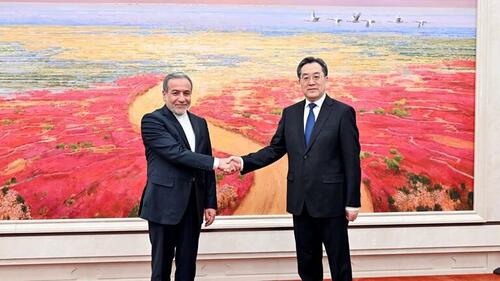 Chinese Vice Premier Ding Xuexiang meets with Iran's Foreign Minister Seyed Abbas Araghchi in Beijing last month. Yin Bogu/Xinhua via Getty Images
Chinese Vice Premier Ding Xuexiang meets with Iran's Foreign Minister Seyed Abbas Araghchi in Beijing last month. Yin Bogu/Xinhua via Getty Images
The main warning and teeth behind it centers on the threat that any nation buying oil or petrochemicals from the Islamic Republic will be barred from doing any business with the US.
"Any Country or person who buys ANY AMOUNT of OIL or PETROCHEMICALS from Iran will be subject to, immediately, Secondary Sanctions," Trump stated in the post. Oil had quickly jumped 2% on the mid-afternoon announcement.
Trump is clearly setting out to negotiate from a position of "strength" amid his maximum pressure campaign, aimed at getting Tehran to sign on to a fresh nuclear agreement.
Talks have apparently hit some logistical hurdles, or perhaps Trump's new secondary sanctions have resulted in jitters and renewal of anger and lack of trust from Iranian leadership:
A fourth round of Iran-US talks over Tehran's nuclear program has been postponed.
Iran said the two countries, along with facilitators Oman, had jointly decided to postpone Saturday's meeting in Rome for "logistical and technical reasons". The US said the timing of the talks had not been confirmed in the first place.
Is this an intentional stall?
Surely it's also a shot across China's bow, given that it imports over a million barrels per day from Iran, and for years amid Tehran's isolation has been the biggest buyer of Iranian crude.
As for when US-Iran talks might resume, after relatively 'positive' prior recent rounds, Iran's Foreign Minister Seyed Abbas Araghchi emphasized Thursday on X that Tehran's "determination to secure a negotiated solution" had not changed.
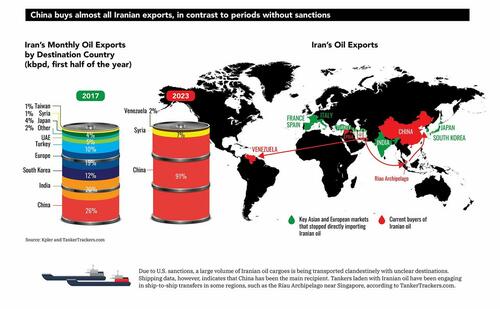 Kpler & TankerTrackers.com
Kpler & TankerTrackers.com
He wrote: "In fact, we are more determined than ever to achieve a just and balanced deal: guaranteeing an end to sanctions, and creating confidence that Iran's nuclear program will forever remain peaceful while ensuring that Iranian rights are fully respected."
-
Site: Zero HedgeSocial Security Cuts Overpayment Withholding Rate To 50% Down From 100%Tyler Durden Thu, 05/01/2025 - 22:10
Authored by Tom Ozimek via The Epoch Times (emphasis ours),
The Social Security Administration (SSA) has announced a new policy that reduces the default withholding rate to 50 percent for recovering Social Security benefit overpayments under Title II, the federal program covering retirement and disability insurance.
The change, outlined in an “emergency message” dated April 25, comes less than a month after the agency raised the withholding rate to 100 percent of monthly benefits—up from a prior 10 percent—to recoup overpayments. The initial sharp increase drew criticism from some lawmakers and advocates, who warned that full withholding could harm some lower-income Americans who rely on Social Security to meet basic needs.
Under the updated directive, any overpayment notice issued on or after April 25 will automatically carry a 50 percent withholding rate. Beneficiaries will have 90 days to respond—either by contesting the overpayment, requesting a waiver, or negotiating a lower repayment rate. If no action is taken within that window, the SSA will start withholding half the monthly benefit until the overpayment is fully repaid.
The updated rules do not apply to Title XVI overpayments, such as those involving Supplemental Security Income (SSI) recipients, who still face the 10 percent withholding rate. The revised policy also excludes cases involving fraud or similar fault, which follow different recovery procedures.
The shift marks the third related policy change in just over a year. In March 2024, the agency lowered the default withholding rate from 100 percent to 10 percent, citing the wish to ease financial hardship for affected Americans.
“It’s unconscionable that someone would find themselves facing homelessness or unable to pay bills, because Social Security withheld their entire payment for recovery of an overpayment,” Martin O'Malley, then Commissioner of Social Security, said at the time.
That policy was reversed last month, on March 27, when SSA reinstated full 100 percent withholding, citing fiscal responsibility and an estimated $7 billion in savings over the next decade.
“We have the significant responsibility to be good stewards of the trust funds for the American people,” Lee Dudek, Acting Commissioner of Social Security, said in a statement.
Rep. John B. Larson (D-Conn.) criticized the increase as “unconscionable,” arguing that overpayments are not the fault of beneficiaries and overpaid recipients who rely on Social Security to make ends meet would face undue hardship if their entire checks were suddenly seized.
With its latest decision to cut the withholding rate in half, the SSA appears to be seeking a middle ground between fiscal responsibility and potential beneficiary hardship.
The agency disbursed roughly $1.4 trillion in benefits in fiscal year 2023 across its retirement and disability programs, according to the agency’s 2024 financial report. Of that amount, around $3.3 billion—or 0.24 percent—was classified as overpayments.
SSA’s overpayment recovery practices have come under increasing scrutiny from lawmakers and watchdogs in recent years, particularly for the stress they impose on beneficiaries who may have had little or no role in the errors.
In a November 2023 letter, Sens. Maggie Hassan (D-N.H.) and Bill Cassidy (R-La.) urged the agency to minimize overpayments and protect recipients from abrupt financial disruption, especially when the mistakes stem from agency error.
The Government Accountability Office has echoed those concerns, noting that the majority of disability beneficiaries who return to work eventually face overpayments—often amounting to thousands of dollars due to complex reporting rules and processing delays.
The SSA says it has launched an internal review and is working to expand data-sharing with payroll systems to help reduce payment errors.
-
Site: RT - News
Donald Trump’s team will work “very hard” to broker a ceasefire, the vice president has said
The Trump administration is prepared to dedicate another 100 days to mediating a peace deal between Russia and Ukraine, US Vice President J.D. Vance told Fox News in an interview published on Wednesday. He said the US has made progress by getting both sides to present their ideas for resolving the conflict.
“We’ve got this first step,” the vice president said, reflecting on the first 100 days of President Donald Trump’s second term.
“We’ve got the peace proposal out there and issued, and we’re going to work very hard over the next 100 days to try to bring these guys together.”
Vance noted that before the Trump administration got involved, Moscow and Kiev “weren’t even talking – not to each other, not to anybody. They were just fighting.” He added: “Now, the work of diplomacy is to try to sort of bring these two sides closer together,” pointing to the “very big gulf between what the Russians want and what the Ukrainians want.”
Read more Ukraine won’t win – Vance
Ukraine won’t win – Vance
During last year’s election campaign, Trump vowed to end the conflict “within 24 hours” of entering the White House – which he later described as an “exaggeration.” Since taking office in January, he has pressed both sides to reach a ceasefire and has recently shown frustration over the lack of progress.
Although Russia praised Trump and his team for better understanding its position than the administration of former President Joe Biden, Moscow insisted that any comprehensive ceasefire must include an end to Ukraine’s mobilization and a halt to foreign weapons deliveries.
Both sides accused each other of violating the month-long energy truce brokered by Trump in March, as well as last month’s 30-hour Easter truce.
Moscow has demanded that Ukraine drop its claims to Crimea and four other regions, and abandon its NATO ambitions.
On Thursday, Trump’s special envoy, Keith Kellogg, said Kiev had agreed to acknowledge Russia’s control over what it considers “occupied territories,” while stopping short of officially recognizing Russian sovereignty. However, Kiev has repeatedly stated that it will not cede any land to Russia.
-
Site: Zero HedgeEconomic Illiterate Kamala Harris Attacks Trump Tariffs As 'Absolute Chaos'Tyler Durden Thu, 05/01/2025 - 21:45
It's an old dictum but it remains true that you never want to interrupt your enemies when they are making a mistake. That said, it's oh so tempting to analyze the behavior of the Democratic Party as a perfect representation of blind cultism. How did they plunge from the heights of the Obama Administration and near complete control of American culture to the depths of the Biden Administration, the Kamala Harris campaign and the degeneracy of woke groomers?
One could follow the root back to the problem of absolutism; leftist never admit when they are wrong and they always double down because they think they are the ultimate arbiters of ethics. Even with the abject failures of Kamala Harris during the 2024 elections the Democrats continue to claim that the "real reason" they lost, the real reason their public approval numbers are at historic lows, is because they "need to do the same things they've been doing, but do them harder".
This is why the progressive movement is dead in the water. They just can't accept that the majority of Americans fundamentally do not like them, their polices or their beliefs. Most Americans can't connect to the hypocrisy, and they certainly don't want to hear criticisms of the Trump Administration by the same people who lied incessantly and failed the country in every way imaginable.
An army of naysayers, primarily among Democrats, have gone on the attack against Trump's tariffs using obviously scripted terminology, repeating the word "chaos" over an over again in the hopes that it will stick. In reality, most of the "chaos" has come from the political left trying to disrupt or sabotage Trump's efforts in any way they can. It's almost like the 2024 campaign never ended, but that's how these people operate.
Kamala Harris, an economic illiterate and possibly one of the most embarrassing candidates the Democrats have ever fielded, has suddenly slithered up from the wreckage of her recent White House bid to regurgitate the same predictable talking points. She says the tariffs are creating chaos; she also claims that she predicted they would cause a recession and she's here to say "she told us so".
One could argue that recession factors were already heavily present during the Biden Administration, but Democrats are hoping most people don't actually know what a recession is.
The chaos narrative is a scheme to tap into a subset of the population that innately fears change or reform. Keep in mind, four years of Biden and Harris brought nothing but total chaos to the US, but economically they did maintain the status quo. The status quo being the perpetual march into stagflatiory crisis, ever higher prices, ever higher taxes and less economic freedom for the average citizen.
What the public is desperate for is to try something different, but anytime new fiscal policies are suggested they are immediately and viciously degraded as a trigger for "chaos".
These arguments come from people (like Harris) that don't have the slightest understanding of America's financial situation. At this stage, a recession and some moderate deflation would be a welcome development given that the Biden regime helped to inflate prices on necessities beyond what most people in the middle class can afford. And, if Trump can actually convert tariffs into government revenues to replace the income tax as he has promised, then the economic renaissance that would result would be unmatched.
To be fair, it is in many ways a gamble. If tariffs are applied for the long term they will require subsequent and speedy manufacturing development on US soil. This is happening already on a limited scale. There is also the likelihood that prices on many imported goods will rise. However, a focus on lowering the costs of domestic necessities like food, energy and housing is what needs to be prioritized (not plastic Chinese trinkets) and sticking with the inflationary trends of globalism is not going to help.
Harris and Democrats want to tie Trump and conservatives to the economy like an anchor and throw it overboard in the hopes that their ideological opponents will be dragged to the bottom. They are also overestimating the public's capacity for forgiveness when it comes to the damage the Dems have already done. At no point have they offered any practical solutions to the dangers facing the US system. Furthermore, they are greatly underestimating the American desire to see the globalist system crash and burn. People are cheering the death of globalism, not living in fear of it.
-
Site: Zero HedgeA Curricular Solution To The Crisis Of Civic IlliteracyTyler Durden Thu, 05/01/2025 - 21:20
Authored by David Bruce Smith via RealClearPublicAffairs,
John and Abigail Adams envisioned an America with a school in every neighborhood and a well-informed citizenry that was adept in languages, literature, and music, as well as science, history, and religion. Their vision was practical until the ages recast it, little by little.
Then sometime between Joseph McCarthy and Joan Baez, the status quo of the educational system came undone.
Students who had been accustomed to a traditional 50/50 split between the humanities and the sciences were capsized academically by the surprise Sputnik launch in 1957. The U.S.’s race to space sent higher education into a tizzy, becoming fixated on improving science education above all. In the succeeding seven decades, resources have consistently risen for STEM (science, technology, engineering, and mathematics), which has been to our benefit. But this has come at an unnecessary cost: the humanities have been downplayed, devalued, and dodged.
That uneven ratio has bestowed an unfortunate historic illiteracy on three generations. Most people, for example, do not know the philosophical roots of the Declaration of Independence, their rights as laid out in the Constitution, or the civic virtues their teachers should have taught them. For these three reasons, many Americans do not vote in local, state, or national elections.
Even amid this crisis of civic illiteracy, only about 18% of colleges and universities nationwide require the study of history and government in their general education programs. In years past, when the architecture of academe was different, a plethora of institutions, such as Harvard, Rice, Notre Dame, Johns Hopkins, and William & Mary, proffered requirements for focused classes in American history. But their phase-out – begun in the 1960s – was practically completed by 2000.
According to a report from the American Council of Trustees and Alumni, nowadays, at Columbia University, “Students must take at least nine courses to graduate with a B.A. in history. Of these courses, four must be in a chosen field of geographical, chronological, or thematic specialization, and three must be outside of the specialization, including one course removed in time and two courses removed in space.” In other words, the major requires exposure to a variety of histories – none of which need touch on America.
That gap in Columbia’s history major requirements is deeply troubling, though it at least has a Contemporary Civilization requirement in its signature core curriculum for undergraduates that addresses founding documents and key concepts of United States government. Meanwhile, at Colgate University, which has no such option in its general education requirements,
“Students choose one of two pathways to graduate with a B.A. in history. Both require nine courses. The Field of Focus (FoF) Pathway requires one history workshop, seven electives….. The FoF Pathway allows students to devise individualized, intellectually coherent specializations. Possible fields of focus include environmental history, gender and sexuality, and race and racism.”
This reorientation away from the study of American history – even as a point of reference for students who are focusing their studies on other parts of the world – is now the norm in the American academy. In the 2020–21 academic year, 18 of the top 25 public universities did not have a wide-ranging American history requirement for students seeking a B.A. in history in the major or core curriculum, nor did 24 of the 25 best national schools.
Even the legendary linchpins of the liberal arts – Amherst, Swarthmore, Vassar, Smith, Williams, and Pomona – fared poorly: 21 out of 25 colleges examined did not have an American history requirement.
The consequences of forgoing the study of American history have a powerful effect on the population. Much of what is not learned – or stays uncorrected – turns into the misinformation that is so damaging in a free and democratic society.
When 8th graders were asked in 2011 to choose a “‘belief shared by most people of the United States,’ a majority (51 percent) picked ‘The government should guarantee everybody a job,’ and only a third chose the correct answer: ‘The government should be a democracy.’”
In 2015, 10% of college graduates believed Judy Sheindlin – TV’s “Judge Judy” – was a member of the Supreme Court.
In 2019, ACTA found that 18% of American adults thought New York Congresswoman Alexandria Ocasio-Cortez was the architect of the New Deal, a package of programs introduced by President Franklin Delano Roosevelt in 1933. Twenty-six percent believed Brett Kavanaugh was the current Chief Justice of the Supreme Court, along with another 14% who identified Antonin Scalia, although he had been dead for two years at the time of the survey. Only 12% knew the 13th Amendment freed the slaves in the United States. And 30% thought the Equal Rights Amendment guaranteed women the right to vote.
In 2024, an ACTA survey of college students showed that fewer than half identified ideas like “free markets” and “rule of law” as core principles of American civic life. The survey also found that 60% of American college students failed to identify term lengths for members of Congress. A shocking 68% did not know that Congress is the branch that holds the power to declare war. Seventy-one percent did not know when 18-year-olds gained the right to vote.
All of these results were based on multiple-choice questions. All the respondents had to do was select the correct option out of four possibilities.
The late Bruce Cole, chairman of the National Endowment for the Humanities from 2001 to 2009, admonished, “Unlike a monarchy, a democracy is not automatically self-perpetuating. History and values have to be renewed from generation to generation.” Our failure to educate future citizens for informed civic participation compromises the country. Institutions need to take ACTA’s findings to heart and, starting with their requirements for the history major, embrace their obligation to address the crisis in civic education.
David Bruce Smith is the founder of the Grateful American® Foundation and co-founder of the Grateful American® Book Prize.
-
Site: Zero HedgeFutures Jump After China Says It Is "Evaluating" Trade TalksTyler Durden Thu, 05/01/2025 - 21:09
Update (9:20pm ET): the first reaction from the US side comes in by way of Marco Rubio who speaks in a Fox News interview, and it is very much as expected: he makes it seem that China reached out first, which to Beijing is a non-started as its specific framework is that the US was reaching out in order for Xi not to lose face:
- RUBIO SAYS CHINA IS REACHING OUT ON ECONOMIC ISSUES
- RUBIO: CHINESE WANT TO MEET AND TALK
And now it is up to China to respond, although since both sides can't seem to even agree on who will cede ground by reached out first, we expect this latest attempt at detente won't go too far.
* * *
Futures spiked, moving back to session highs and forgetting all about the bitter taste from disappointing results from Amazon and Apple, following news from Bloomberg that China was "assessing the possibility of trade talks with the US" the first sign since Donald Trump hiked tariffs last month that negotiations could begin between the two sides.
China’s Commerce Ministry said in a Friday statement that it had noted senior US officials repeatedly expressing their willingness to talk to Beijing about tariffs, and urged officials in Washington to show “sincerity” towards China.
“The US has recently sent messages to China through relevant parties, hoping to start talks with China,” the ministry added. “China is currently evaluating this.”
Of course, the Chinese spin is one in which the Trump admin reached out first, and which the US pro-China media will promptly use to hammer Trump with, resulting in an even quick denial by the president and thus, China, thereby erasing any hope of an overture, one which won't come until both sides are quite desperate.
For now, however, the reaction to the flashing red headline was stark as &P 500 erased early losses in Asia while a gauge of regional equities also turned positive after the statement. The offshore yuan edged stronger, while the Australian dollar, a China proxy, also extended gains.
The statement signals the stalemate between the world’s two largest economies could shift, after Trump hiked US tariffs to the highest level in a century and Beijing retaliated in kind.
Trump has repeatedly said President Xi Jinping needs to contact him in order to begin tariff talks and earlier this week, Treasury Secretary Scott Bessent said it’s up to Beijing to take the first step to de-escalate the dispute; China has done the same.
-
Site: Zero HedgeState Department Instructs Employees To Report Anti-Christian BiasTyler Durden Thu, 05/01/2025 - 20:30
Authored by Zachary Stieber via The Epoch Times,
The State Department recently instructed employees to report workers who exhibited anti-religious bias, including bias against Christians, according to a cable obtained by The Epoch Times.
Secretary of State Marco Rubio in the April 11 cable directed State Department employees to a reporting form and instructed them to provide “information regarding any Department or individual practices involving anti-religious bias during the last presidential administration (2021-2025); and recommendations to the Secretary of State to remedy any anti-religious bias at the Department.”
The cable was obtained by The Epoch Times via a Freedom of Information Act request.
Employees could provide information anonymously, Rubio said.
The submitted information would be collated, he said, to help the department contribute to an interagency report required by President Donald Trump’s February order aimed at halting anti-Christian discrimination.
“It is the policy of the United States, and the purpose of this order, to protect the religious freedoms of Americans and end the anti-Christian weaponization of government,” Trump wrote in the order, which alleged that during the Biden administration, government officials “engaged in an egregious pattern of targeting peaceful Christians, while ignoring violent, anti-Christian offenses,” such as bringing charges against people who demonstrated outside facilities that perform abortions.
Rubio said that while the order focused on anti-Christian bias, targeting anyone for their religious beliefs violates the Constitution, so people can report other instances of anti-religious bias.
The cable listed examples such as being mistreated for requesting religious exemptions from mandatory vaccination or observing religious holidays; being forced to remove displays of religious faith from desks and clothing; and being mistreated for refusing to participate in activities with themes that ran counter to religious beliefs, such as those “related to preferred personal pronouns.”
The State Department declined to say whether any employees have been fired or otherwise disciplined for exhibiting bias against Christians. “As a general practice, we do not comment on internal personnel matters,” a spokesperson told The Epoch Times in an email on April 30.
Last week, Rubio participated in the first meeting of the Task Force to Eradicate Anti-Christian Bias in the federal government, which was created by a Trump executive order.
During that meeting, Rubio raised some of the reported allegations of bias, including claims that Christian Foreign Service officers who homeschooled their children were either reported to the IRS or threatened with a child abuse investigation, according to a Department of Justice readout.
He also disclosed that State Department employees were called “murderers” and “troublemakers” for opposing the government’s COVID-19 vaccine mandate on religious grounds.
“In one instance, an ambassador yelled at an employee, accusing the employee of wanting to kill the ambassador’s mother despite her being back in the States,” the readout stated.
Attorney General Pam Bondi said in an April 22 statement that “Biden’s Department of Justice abused and targeted peaceful Christians while ignoring violent, anti-Christian offenses,” adding, “Thanks to President Trump, we have ended those abuses, and we will continue to work closely with every member of this Task Force to protect every American’s right to speak and worship freely.”
-
Site: Zero Hedge'Very, Very Wrong': Expert Warns China Showing Signs Of 'End-Of-Regime Conduct'Tyler Durden Thu, 05/01/2025 - 20:05
A China politics expert warns that the communist regime shows signs of potential collapse, driven by a worsening economy exacerbated by Trump’s aggressive tariff policies.
"At a time when China needs friends because it's not selling goods to the U.S., it is going out of its way to antagonize not just the Philippines, not just Taiwan, but also South Korea and Australia," Gordon Chang, senior fellow with the Gatestone Institute, told the Fox Business Network.
"This shows that... this is end-of-regime conduct, because Xi Jinping, he can't appear to be giving in to the U.S.," he added. "This is really very perplexing behavior, and it shows that something is very, very wrong in Beijing right now."
Trump has shown little sign of backing down from his trade war with China, slapping a 145% tariff on Chinese imports. Beijing retaliated with 125% duties on U.S. goods. Trump insists his administration is actively negotiating with Beijing officials, but China’s Foreign Ministry has flatly denied any talks, accusing the U.S. of spreading “baseless rumors.”
The White House argues these tariffs are necessary to protect American workers and counter China’s unfair trade practices, while critics warn of skyrocketing prices, empty shelves, and a looming recession.
The Wall Street Journal reported over the weekend that Chinese authorities have quietly waived some of the 125% retaliatory tariffs on certain U.S. imports, including semiconductors, chipmaking equipment, medical products, and aviation parts. This move signals Beijing's concern about the economic fallout from the ongoing U.S.-China trade war. While China has not publicly confirmed these exemptions.
Gordon Chang sounds alarm over Chinese aggression: 'This is end of regime conduct' https://t.co/uvAXbOsmdc @MorningsMaria @FoxBusiness pic.twitter.com/ibSp6e0K73
— Maria Bartiromo (@MariaBartiromo) April 28, 2025As we reported earlier:
On Tuesday morning, U.S. Commerce Secretary Howard Lutnick provided clarity on the highly anticipated auto tariff relief, confirming it will apply to all U.S.-built vehicles.
Lutnick said tariffs will apply to those produced by foreign automakers with plants in the US. He added that the relief would be phased in over three years, giving manufacturers time to shift their supply chains back to the U.S.
The Wall Street Journal offered details regarding how relief would resemble:
The decision will mean that automakers paying Trump's automotive tariffs won't also be charged for other duties, such as those on steel and aluminum, according to people familiar with the policy.
The move would be retroactive, the people said, meaning that automakers could be reimbursed for such tariffs already paid. The 25% tariff on finished foreign-made cars went into effect early this month.
The administration will also modify its tariffs on foreign auto parts—slated to be 25% and effective May 3—allowing automakers to be reimbursed for those tariffs up to an amount equal to 3.75% of the value of a U.S.-made car for one year. The reimbursement would fall to 2.5% of the car's value in a second year, and then be phased out altogether.
Ford CEO Jim Farley lauded the move, providing the following statement to WSJ: “Ford welcomes and appreciates these decisions by President Trump, which will help mitigate the impact of tariffs on automakers, suppliers and consumers. We will continue to work closely with the administration in support of the president's vision for a healthy and growing auto industry in America. Ford sees policies that encourage exports and ensure affordable supply chains to promote more domestic growth as essential.”
-
Site: Public Discourse
In Changing Places, the first novel in his campus trilogy, David Lodge has his characters at Euphoric State University play a party game called “Humiliation.” The players are literature professors, and a turn in the game is played by naming a literary work one has not read, and finding out which of the other players has read it—the more of them that have done so, the more points one earns. You can see that naming an obscure work will not earn many points, and so the winner is the one who humiliates himself by naming prominent works that most—perhaps all—of the others have read. Hence the name of the game; it’s “a kind of intellectual strip poker,” says one of the characters. In one memorable round of the game, a professor immolates his career in spectacular fashion.
I feel like a player in Lodge’s game when I think of all the famous books I haven’t read. This is particularly so where classics of conservatism are concerned. I have been an outspoken conservative since the 1980s—a reader and in more recent decades a contributor to conservative publications, which has not always endeared me to academic colleagues—but because for years my teaching duties and research occupied much of my reading time, I can think of quite a few landmarks of conservative thought that I still have not read. Some of them I have had in my library for years but haven’t found time to read. (See Umberto Eco on having many unread books in one’s possession.) Now I have the time, and I plan to write here occasionally about some of these books I’ve finally gotten around to.
The first such book is Witness, by Whittaker Chambers. I own a first printing—and have had it so long that I don’t remember where I bought it—but it has no value as a collector’s item, because there are many just like it. Chambers’s memoir was one of the bestselling books of 1952. It was reviewed everywhere, topped the New York Times list that summer, and was even a main selection of the Book of the Month Club—an agent’s and author’s dream in those days.
Who was Whittaker Chambers? In the course of his life he was a student of language and literature, a translator (of Bambi, among other works), a member of the American Communist Party and a writer and editor for the party’s press, an “underground” agent passing U.S. government information to Soviet military intelligence, a writer and editor for Time magazine, a farmer, and (after 1955) a notable early contributor to National Review. (For other writings representing his varied career, see this volume edited by the late Terry Teachout.) His memoir is titled Witness because that was what Chambers became in 1948—a key witness before the House Committee on Un-American Activities (HCUA), testifying with firsthand knowledge about Communist infiltration of the government, especially regarding former State Department official and then-president of the Carnegie Endowment for International Peace, Alger Hiss. The crisis of that testimony occupies roughly the final third of the book, the rest being devoted to the author’s early life and education, his years as an “open” Communist and then a clandestine agent of Stalin’s Russia, and his break with Moscow and recovery of something like a normal life.
I have previously praised historian Allen Weinstein’s book Perjury: The Hiss–Chambers Case as “unputdownable”; I read it years ago, and thought I knew all I needed to know about the case, and about Whittaker Chambers, so I didn’t bother to read Witness, which sat right next to Perjury on my shelves. How wrong I was. Witness is an absolutely absorbing work, a self-examination as candid and cataclysmic as St. Augustine’s Confessions or St. John Henry Newman’s Apologia Pro Vita Sua. Like those saints, Chambers records the experience of a conversion. Two conversions, really: the first brought him into the Communist Party in the mid-1920s, full of idealism and convinced that only the Revolution could save a world in crisis, and the second brought him out again, full of revulsion at Stalin’s great Purge in the late 1930s, and convinced that he, Chambers, had become a servant of “absolute evil.” Here is a glimpse of that searing experience, and a taste of the author’s writerly gifts:
What I had been fell from me like dirty rags. The rags that fell from me were not only Communism. What fell was the whole web of the materialist modern mind—the luminous shroud which it has spun about the spirit of man, paralyzing in the name of rationality the instinct of his soul for God, denying in the name of knowledge the reality of the soul and its birthright in that mystery on which mere knowledge falters and shatters at every step.
Chambers had the courage to hope, and to act—first to save his family and then to warn his country. But hope, as we must remind ourselves, is not optimism; it is inseparable from a faith that all will be put right in the end, though that ultimate justice arrive long after our own brief span. Chambers found his faith and hope, worshiping in a Friends Meeting, but he was no optimist. When he took his young family and fled from the party in 1938, he writes, he “knowingly chose the side of probable defeat.” At the time he wrote Witness, three years after testifying against Alger Hiss, Chambers seems still to have believed that the Cold War struggle of the West with the Communist powers could more easily be lost than won. He may have believed this to the end of his life, at age 60, in 1961.
One thing that surely fed Chambers’s pessimism was that in 1939 he had told a high appointee in the State Department of the espionage he knew about, and had named names—to apparently no effect whatever. When he was called to testify to HCUA in 1948, his testimony that Alger Hiss had been and might still be a Communist sparked outrage in the establishment Left—outrage not at Hiss but at Chambers himself. For months, while testifying to both Congress and a grand jury, he had a reasonable fear that he might be indicted for perjury, as Hiss denied everything. Hiss even sued Chambers for defamation—a huge gamble on the former’s part, it turned out, based on an arrogant belief that the latter could not make good on his accusations.
But Chambers had initially held something back, at first accusing Hiss only of having been a clandestine Communist in the government’s employ. He and Hiss had once been good friends, whose families knew each other, and a kind of tenderness restrained Chambers for a time. But Hiss forced his hand, and Chambers finally revealed that Hiss had actually engaged in espionage for the Soviets. When he produced the proof, in the form of documents Hiss had passed to him that Chambers had kept for a decade, Hiss’s world came crashing down. He could not be charged with espionage due to a statute of limitations, but he was convicted of perjury and sent to prison. Amazingly, for three-quarters of a century, Hiss (who died in 1996) has continued to have defenders on the left; I’m aware of two books published since 2000 that claim he was framed, though revelations from the Soviet and FBI archives have made the case against him airtight.
Why did New Deal partisans—whose own patriotism is not in question—deny, dismiss, or obfuscate Hiss’s guilt? I think it was in part a defense against shock—a reflexive disbelief that a darling of the liberal establishment (Supreme Court clerk, congressional staffer, high diplomat at Yalta, Bretton Woods, the United Nations)—could be a traitor to his country. In part it can be explained by a “no enemies to the left” attitude, in which Communists appeared to be simply progressives in a hurry, but not really a threat to the American way of life. And many just recoiled from having to admit that the FBI or HCUA or (of all people) Richard Nixon, one of the committee’s most dogged members, could be right about something.
But the middlebrow reading public, less given to ideological blindness, made Witness a bestseller—partly serialized in the Saturday Evening Post, featured by the Book of the Month Club, snapped up by the thousands in bookstores across the country. In its 799 pages a man bared his soul and wrote movingly of his own failings, his loves and hates, his moments of terror and despair, even his attempted suicide. And it all has the ring of truth.
As I said, Witness was reviewed everywhere, and by notable figures. The liberal anti-Communist philosopher Sidney Hook, in a three-page review for the Sunday New York Times Book Review, accepted Chambers’s testimony against Hiss as altogether truthful and had much praise for his memoir. But Hook was repelled by Chambers’s deeply religious outlook on the crisis of the West, and faulted him for not seeing that “genuine American liberals” too opposed Communism because of their “opposition to all forms of authoritarianism.” Hook’s model liberal was John Dewey, who had indeed done much to bring attention to the outrages of Stalin’s Purge; but as Allen Weinstein tells us, Dewey had disbelieved Chambers’s charges against Hiss because he “had difficulty in bringing himself to believe that the Russians operated a widespread espionage network in the United States.” It was perhaps just too awful to contemplate.
The British writer Rebecca West reviewed Witness for the Atlantic Monthly. She too believed the author’s testimony against Hiss, and had more sympathy than Hook did for Chambers’s forebodings about liberalism’s ability to save itself. What amazed and appalled West was that Chambers could still affirm that his first conversion, to Communism, had been idealistic, not cynical or self-interested, and that he regarded this as true of Communists generally. West complained that Chambers “makes on their behalf a staggering claim to priority as idealists,” responding that in her view “Bolshevik Communism” was an altogether “hard-boiled” ideology concerned only with its own elite’s “monopoly of political power.” But Chambers had anticipated West’s response in his book, writing that Communism’s opponents “suppose it is greedy only for power, and not the revolutionary ends which that power has in view. In that lies the danger of underestimating the force of faith that moves the enemy.”
The great theme of Witness is its other witness. Beyond the testimony of a man that he had once betrayed his country, and knew of others who had done so, is the testimony of a human being who has passed through a fire and lived, though scorched and scarred for life, and has come to believe that there is authentic freedom only under God, not in rebellion against his works. Whittaker Chambers twice committed himself to faiths he thought worth dying for; the first was a tragic error, and the second a hard-won redemption.
Image by Ryan and licensed via Adobe Stock.
-
Site: Zero HedgeThe California Bullet Train Is A Good Lesson In Political DeceptionTyler Durden Thu, 05/01/2025 - 19:40
Authored by William Anderson via The Mises Institute,
This week, my wife and I have traveled Amtrak’s route to and from Bakersfield, California, with the Amtrak line running down the state’s Central Valley past cities like Fresno and Modesto. As our train sped down the tracks at speeds of up to 83 mph, we could see construction of the much-hyped boondoggle known simply as the California Bullet Train.
Much has been written about the proposed (and proposed really is an understatement) project, which is supposed to run entirely by electricity created from renewable resources. In 2008, California voters approved a bond issue of $9.9 billion to determine the feasibility of the proposed high-speed railroad that would link San Francisco and Los Angeles with a then-$33 billion price tag. I have weighed in myself on this project and its spiraling costs (the present estimated total cost being $135 billion…and rising), writing:
If one tries to make sense of an exercise in spending billions of dollars for a Train to Nowhere, one cannot use conventional financial logic. There is a logical process at work, but it is a logic of a different sort than what appeals to a typical reader of this page. Political logic, especially in a state like California where progressive politics dominates, veers sharply from economic and business logic.
But what does the Central Valley have to do with linking the two California cities, both of which are on the Pacific coast far away from the likes of Bakersfield and Fresno?
There already exists a rail link between LA and San Francisco, but it is the slow-moving Amtrak that must make its way through the Coastal Range that runs down the western part of the state.
(An aspiring rail rider would board a CalTrans train from San Francisco to San Jose, then hop aboard Amtrak’s Coast Starlight there as it passes through once a day).
It seems that the promoters of the Bullet Train also are having to bow to the state’s varied geography, which brings us back to construction in the Central Valley. As we looked out the window in the brand-new Amtrak passenger cars recently manufactured for the San Joaquins route, we saw huge concrete viaducts in various stages of completion between Bakersfield and Merced—and that was all the construction we would be able to see, since there is no construction anywhere else on the proposed route.
Understand that no private firm would build a railroad like this because it could never recoup its original costs.
The current projected outlay of $135 billion almost surely will grow, as the project continues to miss its goals and run into more difficulties. It will be mathematically impossible for the rail line ever to turn a profit, even if it ever is completed—which is highly doubtful.
This leaves us with the line between Bakersfield and Merced, which is not scheduled for completion before 2030 and probably won’t be available until 2033. To understand the absurdity of the whole thing, one should remember that this original Bakersfield-Merced line is being built first because it has the friendliest geography—the Central Valley being flat—which means the trains can run for miles on straight tracks, avoiding the hairpin turns through the mountains that would be a feature elsewhere in the state.
(I have ridden Amtrak many times in California, including going over the Sierra Nevada and in and around the Coastal Range south of San Jose. High-speed rail could not function in these places).
But, even given the flat terrain, much of the Bakersfield-Merced line will have to run on huge concrete viaducts that are extremely costly and will take years to complete. To put it another way, if the lowest-hanging fruit for a rail line has been extremely costly, think what will be the case if they ever try to carve a path around and through the mountains that surround Los Angeles.
To put it another way, as we looked at the ongoing construction of this rail line, we were not looking at success, but rather a huge governmental failure. One would think this would be obvious to nearly everyone, but when California Governor Gavin Newsom and local politicians dedicated this rail line, the rhetoric was so delusional that it was comical. Here are some snippets:
Members of the community and Gov. Gavin Newsom gathered in Kern County where the initial operating segment is taking place. Leticia Perez, chairwoman of the Kern County board of supervisors, said that this project is important for residents of California’s rural Central Valley, providing a 171-mile system from Merced to Bakersfield.
“What is represented today is a game changer, a transformative moment for the Kern County workforce - our access to UC Merced, our access to other parts of the state,” Perez said.
“As a resident of Fresno County, the high-speed rail built right here in the valley has been a dream come true,” said Structures Superintendent Anthony Canales who has been working on the project since 2015. “This is not just a transportation program; it’s a transformation project.”
However, the Central Valley already has passenger rail courtesy of Amtrak and if what we saw on our trip with near-empty cars is an indication of the Amtrak ridership of that area, one seriously doubts that high-speed rail—while a curiosity—will make a difference for people in that valley. The local political rhetoric notwithstanding, even if this monstrosity is completed, it won’t be a “game changer” but rather a conversation piece at best.
The longevity of this failed project is a testament both to political inertia and to the love affair that progressives have with both central government economic planning and especially the high-speed rail. It is a massive malinvestment that is saddling California with huge debts that its taxpayers—most of whom will gain no benefit from the bullet train—will have to shoulder in the future. Those politicians and politically-connected contractors most responsible for this boondoggle will gain the benefits (and get to ride for free), while the victims will have to pay.
-
Site: Zero HedgeHegseth Threatens Iran Over Houthi Support: 'You Will Pay'Tyler Durden Thu, 05/01/2025 - 19:15
The start of this week began badly for the Pentagon, as it revealed it had 'lost' a fighter jet in the Red Sea amid the ongoing Yemen bombing campaign. A US Navy F/A-18 Super Hornet fighter jet "fell overboard from the USS Harry S. Truman aircraft carrier while it was being towed on board" - the US military said, and supposedly while the large carrier was making an evasive turn amid inbound Houthi drones or missiles.
The Houthis have been celebrating this as a 'win'. But Defense Secretary Pete Hegseth has on Thursday put Iran on notice, alleging close support from Tehran to the Houthis, saying it 'will pay'.
 Via Associated Press
Via Associated Press
Hegseth addressed the Iranians in a fresh message on X, saying: "We see your lethal support to the Houthis. We know exactly what you are doing."
"You know very well what the US military is capable of — and you were warned. You will pay the consequence at the time and place of our choosing," he continued.
Hegseth as part of the message shared a screenshot of a prior Trump post on his Truth Social, originally written in mid-March, in which the president charged that Iran is "dictating every move" the Houthis make as well as providing arms and intelligence.
"Every shot fired by the Houthis will be looked upon, from this point forward, as being a shot fired from the weapons and leadership of Iran," the president wrote at the time.
But the Islamic Republic has firmly rejected the accusations, highlighting that the Houthis are a political and military movement which acts independently and makes its own decisions, especially on the battlefield.
"Ansar Allah (the Houthis), as the representative of the Yemenis, makes its own strategic decisions, and Iran has no role in setting the national or operational policies of any movement in the resistance front," Iran’s Revolutionary Guard Corps (IRGC) Commander Hossein Salami said soon after the US renewed its bombing campaign on March 15.
The Houthis have pledged not to stop attacks on Western warships in the Red Sea as well as Israel, so long as Israel's military remains active in Gaza. The Red Sea conflict started again almost immediately after the Hamas-Israel ceasefire and hostage exchange deal collapsed.
International shipping through the vital water-way has been essentially blocked for well over a year, and the industry has been forced to adjust. Russian and Chinese commercial vessels have been allowed safe-passage by the Houthis.
https://t.co/DKl55mmFaT pic.twitter.com/vsVttencfH
— Pete Hegseth (@PeteHegseth) May 1, 2025Hegseth's fresh threat toward Iran strongly suggests the Iran debate is still alive and well within the administration. Trump has been urging Iran to sign a fresh nuclear deal or else face possible bombing campaign by the US, and likely Israel. Hegseth has previously been reported to be on DNI Tulsi Gabbard's side - against the hawks and desiring climb-down in terms of Iran tensions.
-
Site: LifeNews
Elon Musk is the rare figure whose interests become worldwide trends. So is the case with global infertility. On his X feed, Musk has called attention to the West’s plummeting birth rates: “Low birth rates will end civilization,” he wrote recently. His shorthand post drew over 47 million views.
Musk is right, entirely right, about global infertility. For generations, leftist ideologues have driven whole societies into abject panic over “climate change,” indoctrinating scores of ordinary people into an ideology we call anti-natalism. This reverse morality emphasizes the virtue of not marrying, not having children, and — by all means — not having lots of children. (Bonus points if you key a Tesla after buying your $14 asparagus at Whole Foods.)
In his inimitable way, Musk has made it his mission to oppose anti-natalism. (On this subject, here’s a compelling presentation I heard in London that thoroughly substantiates the peril of global infertility.) He is right to do so. As Christians, we know that God loves life. We know that God called Adam and Eve and all successive posterity to “be fruitful and multiply” (Genesis 1:28). We know that God has set up creation — in a wonderful and almost mystical way — to renew itself, produce fresh crops each year, and feed an ever-growing planet.
Click here to sign up for pro-life news alerts from LifeNews.com
Resources are not scarce in God’s creation; resources are abundant. Humanity is not a pestilence, but the race that bears God’s image. As believers, then, we can be thankful for Musk’s counter-cultural courage. Yet we cannot end the conversation over anti-natalism there. According to a recent profile by The Wall Street Journal, Musk has fathered at least 14 children by four women.
As Christians, this is not the way to overcome global infertility. In biblical terms, the answer to anti-natalism is this: to build families. This might sound like semantics: “You say have children, I say build families. It’s all the same!” With respect, however, these two approaches are not the same. God’s design for humanity is not to scatter children across the earth like grain, unfathered and largely unknown. Nor are children primarily gambits in a great struggle to fight off paganism, secularism, or Islam. Children, Solomon wrote, are a gift (Psalm 127:3).
Solomon gives us the starting point for a biblical worldview of children. Children are a blessing from God. Beyond this, we know that every boy and girl is a sinner in need of the gospel of grace. Yet the gospel is not something we shout at our kids; the gospel is woven into all our discipleship efforts. Our boys and girls need a great deal of attention, forgiveness, discipleship, training, correction, discipline, and mercy.
The work I am describing is costly work. It is self-sacrifice from start to finish. But we must never let the narrative about family-building center in drudgery and gloom and fear. Parenting is oriented around the cultivation of living beauty; it is the stuff of wonder. In a world that all too often reads children as a curse, we nurture them in hope, love, and faith, always pointing them to Christ, never walking away from them, intentionally choosing to savor all the many happy moments each day brings.
In the final analysis, absentee fatherhood is not a cure for what ails us. In truth, absentee fatherhood is a force multiplier of untold damage to communities, as I’ve explored in this book. Because of this, while many of us agree wholeheartedly with Elon Musk that anti-natalism is wrong, we do not simply encourage people to have children. Facing the specter of death that shadows children at every turn today, we embrace the much harder and much more rewarding approach of Scripture: we build families.
LifeNews Note: Owen Strachan is Senior Fellow for FRC’s Center for Biblical Worldview.

The post Hey Elon Musk. Building a Family is Better Than Just Having Kids appeared first on LifeNews.com.
-
Site: Zero HedgeTether Plans US Stablecoin Launch As Soon As This Year; ReportTyler Durden Thu, 05/01/2025 - 18:50
Authored by Alex O'Donnell via CoinTelegraph.com,
Tether plans to launch a stablecoin product in the United States as soon as this year, the stablecoin issuer’s CEO, Paul Ardoino, said in an April 30 CNBC interview.
Tether’s flagship stablecoin, USDt, is already the US dollar’s top “exporter,” Ardoino told CNBC.
It has a market capitalization of nearly $150 billion, according to data from CoinGecko.
Now, Tether is preparing to expand into the US market “by the end of this year or early next year, at the fastest,” Ardoino said, adding that the timing depends on US lawmakers’ progress on stablecoin legislation.
The stablecoin issuer is working to woo US regulators by proactively collaborating with law enforcement and highlighting USDt’s benefits for the US economy.
"We are just exporters of what we believe to be the best product the United States ever created — that is, the US dollar,” the CEO said.
Tether's USDT has 66% of the stablecoin market share. Source: Nansen
Market leader
As of April 25, USDt commanded a roughly 66% market share among stablecoins, according to Nansen, a Web3 researcher.
Tether is also the most profitable stablecoin issuer, logging a net income of nearly $14 billion in 2024.
It earns revenue by accepting US dollars to mint USDt and then investing those dollars into highly liquid, yield-bearing instruments such as US Treasury bills. Still, USDt’s popularity is largely limited to users outside of the United States, where rival stablecoin USDC is dominant.
Tether designed USDt “for the people that live in small villages in Africa... [or] a shop owner in Istanbul,” Ardoino told CNBC, adding that Tether is developing a “different product” for the US.
Adoption of USDC has accelerated in the wake of US President Donald Trump’s November election win, Nansen said in an April 25 report. Circle’s USDC has a market capitalization of more than $60 billion, CoinGecko data shows.
However, USDt is still likely to maintain its leading position in the stablecoin market. “Despite the potential dispersion in stables, we inevitably believe this is a ‘winner-takes-most’ market dynamic,” the Web3 researcher added.
-
Site: LifeNews
In recent times, Coloradans appear to be facing the weight of policies that attack their First Amendment rights.
Earlier in April, state Democrats launched a full assault on free speech through HB25-1312 — legislation that seeks to classify “misgendering” and “deadnaming” as forms of abuse. But while Coloradans grapple with threats to their free speech, another policy shift undercuts their religious and moral convictions. Governor Jared Polis (D) officially signed SB25-183 into law, effectively forcing taxpayers to fund abortions.
With the stroke of a pen, Polis weaponized Amendment 79, transforming a political agenda into a crushing taxpayer burden. Mere weeks ago, thousands of Colorado pro-lifers encircled the state capitol, fiercely defending the sanctity of life. Yet, Polis — dismissing their convictions — claims this fulfills the “will of voters to strengthen access to reproductive care.” Now, pro-lifers’ own tax dollars are being funneled to fund abortions, the very procedure they passionately oppose.
Click here to sign up for pro-life news alerts from LifeNews.com
The legislative vote was almost perfectly split among party lines. All Republicans opposed the legislation, while all but one Democrat was in favor. Before now, Section 50 of Article V of the Colorado Constitution had prohibited using public funds to fund abortions. But as The Christian Post reported, “Section 50 has now been repealed from the state constitution after 62% of voters approved Amendment 79 in the 2024 election.”
As such, the outlet added, “Amendment 79 established a right to abortion in the state constitution and allowed abortion to be covered in health insurance plans for state and local government employees as well as those enrolled in state and local government insurance programs.” The legislation “appropriates $1.5 million in state taxpayer funds to pay for abortion reimbursements.”
Furthermore, cases of rape, incest, and life endangerment were previously the only instances allowing reimbursement for “abortion care services,” as the fiscal note stated. But under the newly enshrined Senate Bill 25-183, the Department of Health Care Policy and Financing is required to use taxpayer dollars to cover abortions for anyone enrolled in Medicaid and Child Health Plan Plus programs. This law also prevents Colorado from helping out-of-state or federal investigations that try to punish people or groups for providing abortions.
In response to the bill passing, before it was officially signed, a group of Colorado bishops sent an open letter, pleading for the governor to veto the bill. “Every human life, from conception to natural death, is a sacred gift from God. No act of law can change this truth, nor can it erase our moral obligation to defend the most vulnerable among us. The allocation of millions of dollars in taxpayer funds to subsidize the deliberate ending of innocent life is a tragedy for Colorado.”
The letter continued: “Rather than using state resources to support life-affirming alternatives … this bill instead prioritizes public funding of abortion at the expense of the lives of preborn children, the health of their mothers and the conscience rights of millions of Colorado taxpayers who morally object to abortion. We urge you, Governor Polis, to consider the millions of Coloradans who do not want their hard-earned tax dollars to be used in the destruction of human life. We call upon you to veto SB 183.”
Evidently, the governor did not heed their pleas and instead boasted about signing it. Following his signature, Polis lauded the new legislation. “In the Free State of Colorado,” he said, “we are protecting Coloradans’ healthcare freedoms, while leaders in DC and across the country are focused on bringing government between doctors and patients, overreaching into our families and lives. This past November, Coloradans from every walk of life overwhelmingly voted to enshrine reproductive freedom into our constitution.”
Additionally, Colorado House Speaker Julie McCluskie (D) claimed this bill cuts costs because “a birth is more expensive than an abortion.” However, as Family Research Council’s Director for the Center of Human Dignity Mary Szoch told The Washington Stand, “McCulskie’s comments are disgusting.”
She continued, “Taxpayers in Colorado will now be forced to pay for killing the most innocent among us.” As Szoch emphasized, “In the United States, most people stopped placing dollar amounts on persons lives after the Civil War — and that practice is acknowledged as one of the greatest sins of America.”
“Every person has value beyond measure,” she concluded, and “House Speaker McCluskie should be ashamed to be part of such an evil act.”
LifeNews Note: Sarah Holliday is a reporter at The Washington Stand, where this originally appeared.

The post Colorado Forces Taxpayers to Fund Abortions Up to Birth appeared first on LifeNews.com.
-
Site: Zero HedgeUS House Passes Resolution To Stop California From Banning Gas-Powered CarsTyler Durden Thu, 05/01/2025 - 18:25
The U.S. House of Representatives passed (245-164) Rep. John Joyce's (R-PA) H.J. Res.88, a resolution blocking the Biden Environmental Protection Agency's waiver that would let California ban petrol-powered cars and trucks and force dystopian electric vehicle mandates nationwide.
H.J. Res. 88 seeks to overturn a Biden-era EPA decision that granted California a waiver to ban the sale of new petrol-powered vehicles by 2035. This mandate would've had massive ripples far beyond the progressive state's borders, forcing automakers to comply nationwide with EV mandates, thus leading to a surge in driving costs for all working families. Without intervention, California's toxic climate policy could effectively dictate EV mandates nationwide.
"Today, the House passed RepJohnJoyce's H.J.Res.88 to reverse a Biden-era regulation that requires all of the vehicles in America to be emission-free," House Republicans wrote on X, adding this repeal would be some of the first steps in "reversing Biden's disastrous EV mandates and giving power back to consumers to decide which cars they want to drive."
Today, the House passed @RepJohnJoyce’s H.J.Res.88 to reverse a Biden-era regulation that requires all of the vehicles in America to be emission-free.
— House Republicans (@HouseGOP) May 1, 2025
House Republicans are reversing Biden’s disastrous EV mandates and giving power back to consumers to decide which cars they… pic.twitter.com/lc63WUKD4hAs of May, eleven U.S. states have adopted California's plan to phase out the sale of gasoline and diesel-powered vehicles. These states include New York, Massachusetts, Oregon, Washington, Vermont, New Jersey, Maryland, Delaware, New Mexico, Colorado, and Virginia. Together, these states account for about 40% of the U.S. auto market.
"Proud to see my bill to protect consumer choice in the automobile market pass the House in a bipartisan fashion," Rep. Joyce wrote on X.
The Republican representative from Pennsylvania noted, "Congress cannot allow California to set national policy. I urge my Senate colleagues to pass this legislation so @POTUS can protect the freedom of the open road for the American people."
Proud to see my bill to protect consumer choice in the automobile market pass the House in a bipartisan fashion.
— John Joyce, M.D. (@RepJohnJoyce) May 1, 2025
Congress cannot allow California to set national policy. I urge my Senate colleagues to pass this legislation so @POTUS can protect the freedom of the open road for… pic.twitter.com/1S5QDg3YwmDismantling California's EV mandates is a top priority for President Trump. This week, the Western world was served a sobering reminder of the consequences tied to the aggressive march toward net zero death:
NatGas Generators Rescued Spain From Net Zero Death After Power Collapse https://t.co/NAthNQjTJY
— zerohedge (@zerohedge) April 30, 2025Action on the measure now moves to the Senate.
-
Site: RT - News
Chay Bowes has said the authorities labeled him a threat to national security
The Romanian authorities accused RT journalist Chay Bowes of representing a security threat before deporting him from Bucharest on Thursday.
The Irish reporter was taken by police from a flight from Dublin that had arrived in the Romanian capital, where he had traveled to cover the upcoming re-run of the presidential election. Bowes was put on a plane to Istanbul later that day.
Shortly after touching down in Bucharest, a group of police officers walked onto the tarmac and boarded the plane, Bowes said.
“They asked the cabin crew where I was. I identified myself, and three police came on to the plane and told me that I had to come with them, [and] that I was being detained,” he said after arriving in Istanbul.
As other passengers watched “with amazement,” police escorted Bowes for an interrogation. “I was asked questions in the vehicle by the officers – where I was going and who I was going to meet. I told them I was a journalist. They wanted to know who I was going to speak to, which I declined to tell them. I said I’m here to cover the election.”
Bowes said he was then taken to “a smaller interrogation room with two chairs and a table.”
I was presented with a document, which was presumably stamped by a judge. They wouldn’t let me have a copy of it. They wouldn’t let me take a photograph of it. It said that I was a threat to the security of the state, and on that basis they were deporting me from Romania.
Bowes denounced the deportation as a “fundamental breach” of his rights as a journalist and an EU citizen. “I entered the country completely legally – to do my job. This is really quite shocking,” he said.
Read more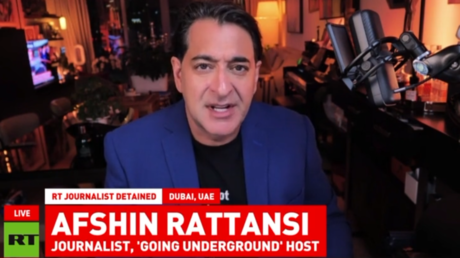 ‘No free press’ in NATO states – Going Underground host on RT journalist ban
‘No free press’ in NATO states – Going Underground host on RT journalist ban
The presidential election in Romania will take place over two rounds on May 4 and 18. The dates were set in January after Romania’s Constitutional Court annulled the results of the initial vote held in November 2024.
The original first round had been won by independent candidate Calin Georgescu, a vocal NATO critic and opponent of supplying weapons to Ukraine, who received 23% of the vote. Romania’s top court, however, cited “irregularities” in his campaign and referenced intelligence reports alleging Russian interference, which Moscow denied.
It later emerged that a TikTok influencer campaign had been funded not by the Kremlin, but by the pro-EU Romanian National Liberal Party, which has governed the country for much of the past three decades. Its most prominent member, Nicolae Ciuca, was a losing candidate in the November election.
-
Site: ChurchPOP'The Selfie Generation': Meet the 5 Youngest Cardinals Participating in the Papal Conclave
Three of the youngest cardinals participating in the upcoming Conclave shared an unexpected moment of lightheartedness, taking a selfie together inside Saint Peter’s Basilica.
The viral social media image shows that faith and reverence meet the digital age with authenticity and openness.
Cardinal Americo Manuel, 51, of Portugal; Cardinal Mykola, 45, a Ukrainian Greek Catholic based in Australia; and Cardinal Giorgio Marengo, 50, of Mongolia, were seen smiling for the candid photo beneath the iconic basilica's imposing dome.
Pontifical Mission Societies Vice President Ines San Martin published the photo on X (Formerly Twitter). The photo was taken on the day of Pope Francis' funeral Mass in St. Peter's Square on April 26, 2025.
Three of the youngest cardinals who will take part in the Conclave: Americo Manuel (51), from Portugal; Cardenal Mykola (45), Ukrainian Greek Catholic cardinal from Australia; and Cardinal Giorgio Marengo, (50), from Mongolia. They took a selfie yesterday in St Peter's Basilica. pic.twitter.com/8rNa3vUWwA
— Ines San Martin (@inesanma) April 27, 2025Click here if you cannot see the post above.
"Three of the youngest cardinals who will participate in the Conclave: Américo Manuel (51), from Portugal; Cardinal Mykola (45), Ukrainian Greek Catholic cardinal from Australia; and Cardinal Giorgio Marengo, (50), from Mongolia. They took a selfie yesterday in St. Peter's Basilica."Journalist Jean-Pierre Denis also posted the photo, along with another selfie and the caption: "The first conclave of the selfie generation."
Le premier conclave de la génération selfie. pic.twitter.com/gDwOGX2sCU
— Jean-Pierre Denis (@jeanpierredenis) April 28, 2025Click here if you cannot see the post above.
In the photo, Japanese Cardinal and Archbishop of Tokyo Tarcisio Isao Kikuchi smiles on a bus with several cardinals in the background. The photo was originally posted by the prelate.
 Cardinal Kikuchi poses for a selfie on a bus with other cardinals. Credit: Jean-Pierre Denis, X
Cardinal Kikuchi poses for a selfie on a bus with other cardinals. Credit: Jean-Pierre Denis, XThe New Generation: The 5 Youngest Cardinals of the Conclave
With the conclave set to begin May 7, the younger generation of cardinals is attracting attention. Of the 135 eligible electors, 15 are under the age of 60.
Cardinal Mykola Bychok, 45 years old
 Photo credit: Ukrainian Catholic Church
Photo credit: Ukrainian Catholic ChurchBorn in Ternopil, Ukraine, Cardinal Bychok discovered his calling at age 15 and joined the Redemptorists in 1997, serving in Ukraine, Russia, and the United States.
In 2020, Pope Francis appointed him Bishop of the Ukrainian Greek Catholic Eparchy in Melbourne. There, he dedicated himself to the Ukrainian diaspora and young people. On December 7, 2024, he was elevated to a cardinal, becoming the youngest cardinal in the world.
Cardinal Giorgio Marengo, 50 years old
 Photo credit: Daniel Ibañez / EWTN News
Photo credit: Daniel Ibañez / EWTN NewsBorn in 1974 in Cuneo, Cardinal Marengo has been a Consolata missionary in Mongolia since 2003. In 2020, he was appointed Apostolic Prefect of Ulaanbaatar. Pope Francis made him a cardinal in 2022 at the age of 48. At the time, he was the youngest member of the College of Cardinals. In 2023, he played a key role in the Pope's historic visit to Mongolia.
Cardinal Américo Manuel Aguiar Alves, 51 years old
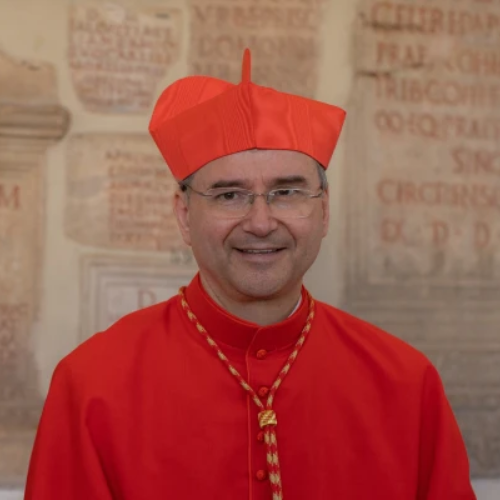 Photo credit: Daniel Ibañez / EWTN News
Photo credit: Daniel Ibañez / EWTN NewsBorn in 1973, Cardinal Aguiar Alves is the Bishop of Setúbal, Portugal. Ordained a priest in 2001, he held important positions in the Diocese of Porto and then as auxiliary bishop in Lisbon.
There, he gained international prominence by leading the 2023 World Youth Day in Lisbon, which brought together more than 1.5 million young people. Pope Francis elevated him to a cardinal at the end of 2023.
Cardinal George Jacob Koovakad, 51 years old
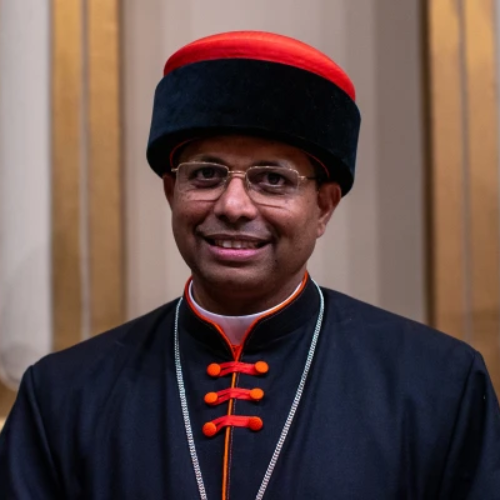 Photo credit: Daniel Ibañez / EWTN News
Photo credit: Daniel Ibañez / EWTN NewsCardinal Koovakad, born in 1973 in Kerala, India, is a Syro-Malabar archbishop and a veteran Vatican diplomat. In 2020, he returned to Rome to play a key role in organizing Pope Francis's international travels between 2021 and 2024. On December 7, 2024, he was made a cardinal and subsequently appointed Prefect of the Dicastery for Interreligious Dialogue.
Cardinal Francis Leo, 53 years old
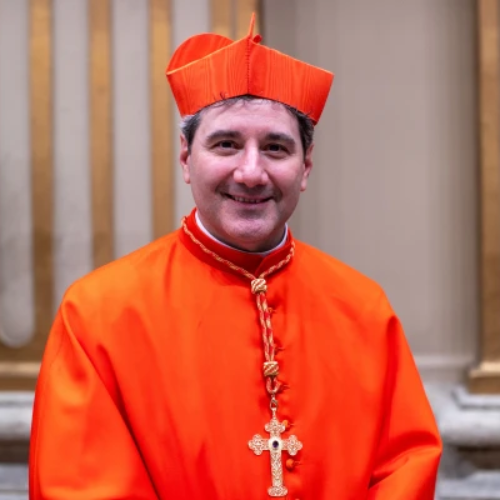 Photo credit: Daniel Ibañez / EWTN News
Photo credit: Daniel Ibañez / EWTN NewsCardinal Francis "Frank" Leo, born in 1971 in Montreal, Canada, is the Archbishop of Toronto and a renowned theologian specializing in Mariology.
Ordained a priest in 1996, he has held important positions, including Secretary General of the Canadian Conference of Catholic Bishops from 2015 to 2021. Appointed Archbishop of Toronto in 2023, he now leads one of the largest Catholic communities in Canada. Pope Francis also elevated him to a cardinal in December 2024.
Let us pray for the College of Cardinals, that the Holy Spirit may enlighten them in this important time for the Catholic Church!
-
Site: Zero HedgeWhat We Know About The Illegal Immigrant Allegedly Helped By A Wisconsin Judge To Evade ICETyler Durden Thu, 05/01/2025 - 18:00
Authored by Janice Hisle and Savannah Hulsey Pointer via The Epoch Times,
The man arrested by immigration authorities in Milwaukee - despite a Wisconsin judge’s alleged attempt to shield him - is being held in a neighboring county’s jail as controversy continues to swirl around the case.
Eduardo Flores Ruiz, 30, was locked up in the Ozaukee County Jail awaiting further court action as of April 30.
He is accused of injuring three people in a recent domestic dispute, online records show.
The Mexico native is the defendant whom Judge Hannah Dugan is accused of assisting in an April 18 incident at the Milwaukee County Circuit Court.
Flores Ruiz appeared at the court for a hearing on that date, but it didn’t proceed, federal authorities say, after Dugan allegedly took actions to thwart Immigration and Customs Enforcement (ICE) officers who were poised to arrest the defendant and begin deportation proceedings.
Federal officials accuse the judge of helping Flores Ruiz and his lawyer to exit through a restricted-use door. Officers, however, were able to arrest him after a foot chase outside the courthouse.
He was previously deported to his home country in 2013, before being accused in the domestic violence case that was assigned to Dugan, officials said.
The state Supreme Court suspended Dugan while she contests charges of concealing Flores Ruiz and obstructing ICE.
Dugan, who was arrested on April 25, is set for her next court hearing as a defendant on May 15 in Milwaukee federal court.
This 2016 photo shows Judge Hannah Dugan in Milwaukee, Wis. Lee Matz/Milwaukee Independent via AP
Milwaukee County court and police records reveal more information about the incident that landed Flores Ruiz in Dugan’s court on three domestic abuse-battery charges.
Three people told police that Flores Ruiz injured them during a March 12 verbal and physical altercation, after which two of them sought hospital treatment.
Miguel Mendoza-Figueroa alleged that Flores Ruiz “intentionally ... struck him multiple times in his body and face, causing pain and scratches during a verbal argument about loud music,” the police report says.
The man reported being punched about 30 times.
When Deyci Torres Sierra, identified as Miguel’s girlfriend, tried to intervene, Flores Ruiz “struck her multiple times in her head” with his fist, inflicting pain, the report says.
A second woman, Maria Sierra Chihuahua, said she, too, tried to break up the fight, and Flores Ruiz “elbowed her in her upper left arm.”
Police said that, when questioned at the scene, Flores Ruiz described the incident as “a mutual fight” between himself and Mendoza-Figueroa, a court record shows.
The defendant is set to appear on the three charges in the county court again on May 14. Each of the charges is a Class A Misdemeanor, punishable upon conviction by a fine of up to $10,000 and nine months behind bars.
Dugan remains in online records as the judge assigned to his case, despite her temporary suspension from duty. The Epoch Times was unable to reach the court’s chief justice for clarification.
The Epoch Times sought comment from Flores Ruiz’s lawyer, Mercedes de la Rosa, and the local prosecutor handling the case, Kylan Reilly, and received no reply prior to publication.
-
Site: Zero HedgeApple Slides On China Sales Slump And Soft Service Revenue, Despite Tariff Frontrunning Revenue Boost And New $100BN BuybackTyler Durden Thu, 05/01/2025 - 17:42
Ahead of Apple's earnings report this afternoon, which concludes the results from big 4 group of the Mag 7 (including MSFT, META and AMZN) UBS said that sentiment was a 5/10, with the bank's analyst expecting some pull-forward offsetting soft demand, while creating tougher 2H compares with the consensus too optimistic. UBS, which has a $210 price target, reiterated its $210 price target (Neutral) warnings that although the rich valuation remains a perennial overhang, sentiment is more cautious given the ongoing tariff and market share headwinds. The bottom line: with the mild short bias ahead of the print, there was a decent chance for a tactical bounce due to pull-ins, but probably not enough to alleviate the ongoing concerns.
And sure enough, 30 minutes after AMZN disappointed with lackluster AWS profit margins and a soft operating profit forecast, it would be 2 for 2 for the bears, with AAPL stock sliding on disappointing China sales even as tariff fears sent iPhone purchases across the world into overdrive. Here are the details:
- Adjusted EPS $1.65 vs. $1.53 y/y, beating estimate $1.62
- Total revenue $95.36 billion, +5.1% y/y, beating estimate $94.59 billion
- Products revenue $68.71 billion, +2.7% y/y, beating estimate $67.84 billion
- IPhone revenue $46.84 billion, +1.9% y/y, beating estimate $45.94 billion
- Mac revenue $7.95 billion, +6.7% y/y, beating estimate $7.75 billion
- IPad revenue $6.40 billion, +15% y/y, beating estimate $6.12 billion
- Wearables, home and accessories $7.52 billion, -4.9% y/y, missing estimate $8.05 billion
- Service revenue $26.65 billion, +12% y/y, missing estimates if $26.72 billion - this was the first red flag.
The second, and even bigger, red flag was the usual suspect: China, where revenues unexpectedly slumped, sliding 2.3%, while Wall Street was expecting a mid-single digit growth
- Greater China rev. $16.00 billion, -2.3% y/y, missing estimates of $16.83 billion
Going down the line:
- Total operating expenses $15.28 billion, +6.3% y/y, higher than estimate $15.17 billion
- Gross margin $44.87 billion, +6.1% y/y, higher than estimate $44.58 billion
- Cash and cash equivalents $28.16 billion, -14% y/y, missing estimates of $32.73 billion
- Cost of sales $50.49 billion, +4.1% y/y, higher than estimate $50.23 billion
And so on:
Looking at a breakdown of sales by product category it was a generally solid report, although that was to be expected as a result of pulled forward demand for iPhones ahead of tariffs which would likely push prices sharply higher. Here are the details: .
- IPhone revenue $46.84 billion, +1.9% y/y, beating estimates $45.94 billion but much of this was due to pulled forward sales ahead of tariffs
- Mac revenue $7.95 billion, +6.7% y/y, beating estimates of $7.75 billion, same logic here
- IPad revenue $6.40 billion, +15% y/y, beating estimates of $6.12 billion
- Wearables, home and accessories $7.52 billion, -4.9% y/y, big miss to estimate $8.05 billion
Bottom line, while most segments came in stronger than expected, much of this will likely reverse in Q3 when tariffs push prices higher (because tariffs are inflationary right), meanwhile, Apple’s wearables segment (where one can find the Vision Pro disaster) remains a big disappointment, and the new low-end AirPods and hearing features for the AirPods Pro apparently did not draw much interest.
Here is the full revenue breakdown by product:
But if iPhone sales was solid (if transitory) the devastation that is China sales was catastrophic: contrary to expectations for a modest rebound, as China sales declined for a seventh consecutive quarter, down 2.3%, and printing at only $16BN, below the $16.9BN estimate.The rest of the world saw growth, modest in the Americas at 8.2%, and stronger in Japan and APAC, while Europe barely grew.
And in dollar terms:
Needless to say, China continues to be a very weak spot for Apple and the company hasn’t done much to push new products, pricing and initiatives in that market -- or other emerging areas -- to offset the issues. The weakness there, which Apple will try to explain away in its conference call, is because of a combination of nationalism and interest in local products, whose designs are getting better. The local players are also trying new things like foldables while Apple continues to use the same design it rolled out five years ago. Oh, and Trump's trade war which is getting worse by the day, isn't helping.
The result: revenues declining now for an unprecedented 7 quarters!
There was more: Service revenue, which for many years was the only golden goose left in AAPL's roster, is starting to sputter, and even though it rose to a new record $26.65 billion, this missed estimates of $26.72 billion and the growth rate was the lowest in two years.
The company has been contending with multiple challenges, beyond just the looming tariffs. Apple is playing catch-up in artificial intelligence, forcing it to shuffle management in recent weeks. It’s also under mounting regulatory pressure in the EU and its home country. On Wednesday, a federal judge demanded that the company open up its App Store to third-party payment options and stop charging commissions on outside purchases.
But tariffs remain one of the biggest question marks. Though Apple is likely to sidestep the 145% China levy that the administration originally proposed, new tariffs on electronics are still coming. The turmoil threatens to upend the company’s supply chain and potentially force it to raise prices. Already, Apple is looking to make more of its US-bound iPhones in India rather than China. Ironically, it was tariffs that helped the company revenues beat estimates as customers flooded Apple retail stores to buy new iPhones and other products out of fear that price hikes were coming.
In the press release, CEO Tim Cook tried hard to stay positive, but failed.
“Today Apple is reporting strong quarterly results, including double-digit growth in Services,” said Tim Cook, Apple’s CEO. “We were happy to welcome iPhone 16e to our lineup, and to introduce powerful new Macs and iPads that take advantage of the extraordinary capabilities of Apple silicon. And we were proud to announce that we’ve cut our carbon emissions by 60 percent over the past decade.”
The bigger problem is what he said on the conference call, where it said that he hadn't seen excess pull forward demand in Q1 (it did)...
- COOK: DIDN'T SEE EXTRA DEMAND IN MARCH QUARTER ON TARIFFS
... and pretended not to know what the tariff impact will be:
- COOK: NOT SURE WHAT TARIFF IMPACT WILL BE AFTER JUNE QUARTER
Trump's tariff policy may be unclear to Cook, but what is clear to everyone, is that growth for AAPL is slowing fast:
- *APPLE CFO: Q3 REVENUE TO GROW LOW TO MID-SINGLE DIGITS YOY
Which was the same guidance as the current quarter, and the market is starting to realize Cook isn't sandbagging... instead the debate what is the right multiple on a company that has now officially flatlined. To be sure the kneejerk reaction was not happy, with AAPL stocks sliding about 3% after hours, the second consecutive quarter in which the market punished AAPL earnings, to just above $206 after closing today at the highest price since Trump's Liberation Day.
Not even the news that the iPhone maker authorized a new $100 billion stock buyback and boosted its quarterly dividend 4% to 26 cents a share, was enough to prop up the stock.
-
Site: OnePeterFive

The current neo-Modernist crisis marring the Mystical Body of Christ has left many of its members disillusioned. According to Pope Paul VI, the Second Vatican Council was supposed to signal “a day of sunshine for the history of the Church.”[1] As of 2025, though, it is clear that the majority of Catholics are apostates who have abandoned Christ and set their sights on the world.
-
Site: Euthanasia Prevention Coalition
The Euthanasia Prevention Coalition sent out an Action alert on April 30, after the New York state Assembly passed the assisted suicide bill by a 81 to 67 margin.
On April 24, the New York Post published an editorial opposing the legalization of assisted suicide. Here is what the New York Post published:
New York’s progressive legislators have reportedly gotten behind what may be their most morally disgraceful bill yet: an assisted-suicide legalization push.
Worse, per Assembly Speaker Carl Heastie (D-Bronx), the bill has the votes to pass, which may happen as early as next week.
This must. Not. Happen.
Assisted suicide is sold to the public as a form of compassion — yet another inversion of reality.
In practice, it is anything but.
The trouble is, the promised reservation of assisted suicide to the chronically ill and elderly seems somehow always to get expanded.
Until it encompasses young, physically healthy people like Zoraya ter Beek, whom the Dutch state permitted to take her own life because she was depressed.
Or, as is the case with Canada, the poor, the disabled and the marginalized.
Like Alan Nichols, a down-on-his-luck man with a history of mental illness who listed “hearing loss” as the only health reason for his own euthanasia — which, shockingly, was then granted.
The Trudeau government even tried to sell veteran and paralympian Christine Gauthier on suicide, simply because she fought to have the Veterans’ Affairs department install a wheelchair ramp at her house.
The idea that fiscal calculations, i.e. that it’s cheaper simply to kill people like Nichols and Gauthier than to help them, didn’t play some role here is dubious, at best.
In the US, Oregon — the pioneer on OKing this insanity — is already mulling the idea of expanding the class of people authorized to prescribe suicide drugs to include nurse practitioners and vastly shortening the wait time from 15 to two days.
Vermont might include literal quacks on the list of people allowed to help people kill themselves.
It’s the slipperiest of slippery slopes, in other words.
And a slap in the face to the nearly 3 million Catholics in the state who oppose assisted suicide on religious grounds.
And this is New York, remember, where the state couldn’t even manage to roll out a legal cannabis initiative without turning it into a complete disaster.
And where within recent memory, a governor shoved old people with COVID into nursing homes to die and kill others just to make himself look better on television and earn $5 million from a book.
Even under the sanest and stablest of governments, state-sanctioned euthanasia is obscene.
Here, it would be a Boschian nightmare.
Gov. Hochul, this issue is an easy win: Keep fighting the good fight, stand up to the extremists in your own party and stop this madness if and when it reaches your desk.Previous article on this topic:
Action is needed: New York state Assembly passes assisted suicide bill (Link).
-
Site: Zero HedgeWalmart Increases Support For USA-Made ProductsTyler Durden Thu, 05/01/2025 - 17:20
At a time when American consumers are increasingly interested in what products are actually "Made in the USA"—as evidenced by a recent report showing a surge in related internet searches—the nation's largest retailer announced plans this week to boost its support for American-made goods through new initiatives.
Walmart has launched a new initiative called "Grow with US," offering tools and support to small businesses, especially those producing American-made goods. The program is designed to strengthen the U.S. economy, which is largely driven by small businesses.
"We're unveiling Grow with US, a new program designed to provide U.S. small businesses with the training, mentorship and resources they need to grow with Walmart," Walmart's U.S. CEO and president, John Furner, wrote in a press release.
The CEO pointed out that over 60% of Walmart's U.S. suppliers are small businesses. With the ongoing trade war with China, domestic sourcing for the mega-retailer might increase. Currently, the Trump administration has 145% tariffs on all Chinese goods entering the U.S.
"More than 40 years ago, Mr. Sam set a priority that still drives us today: supporting American-made products and the small businesses behind them. Simply put, we want small businesses to work with Walmart, but we know getting started can feel complex," the CEO said.
At the start of March, Furner announced a new commitment: "First, we're announcing a new commitment: over the next ten years, Walmart will spend an additional $350 billion on items made, grown or assembled in the U.S. We estimate that this spend will support more than 750,000 new American jobs."
Walmart's expanded commitment to America's thousands of small businesses offering domestically produced goods is fantastic news as the Trump administration works to restore the nation's manufacturing base via a trade war with China to re-shore critical supply chains that will be needed before the 2030s kick-off.
In line with Walmart's commitment to "Made in the USA," we're proud to launch a new partnership this Friday with the Beef Initiative. The goal is to connect consumers with mom-and-pop ranchers producing clean, locally sourced beef that aligns with the "Make America Healthy Again" protocols. This grassroots effort aims to help rebuild America's mom-and-pop ranchers and farmers one beef cut at a time: Shop Clean Beef.
Let's remember that none of this would have been possible without President Trump's relentless push to reshore supply chains and rebuild America's hallowed manufacturing core. There will be plenty of opportunities ahead—right here at home.
-
Site: Ron Paul Institute - Featured Articles
This was adapted from an RPI subscriber update. Subscribe here for free and see it first.
The long-debated “minerals deal” was finally signed between the US and Ukraine late Wednesday, after a months-long, whiplash-producing back and forth between the two parties. In the end, Wednesday started with an affirmation that the deal would be signed, then by mid-day we were told that the Ukraine government aircraft turned around mid-flight and the deal was off, and then later in the afternoon the deal was finally actually signed. That is the chaos that is Trump 2.0 foreign policy in these early days of the Administration.
The “minerals deal” that was eventually signed was billed as a miraculous breakthrough, an amazing journey from the dramatic confrontation between the US president and vice president and Zelensky in the Oval Office just weeks ago, to the point where President Trump can raise high his trophy: the signed minerals deal for which an enormous amount of US diplomatic effort has been spent!
But the deal signed Wednesday in no way resembles the original “rare earths” deal touted by President Trump just a few weeks ago. Recall that when first launched this “deal” was a way for Ukraine to “pay back” the United States for $350 billion in assistance as calculated by the Trump people. The number is only accurate if one goes back to the US-backed coup in 2014, and, ironically, through the first Trump term (where for the first time offensive weapons were provided), and past the Biden largesse after Russia’s launch of its “special military operation” in February of 2022.
And it was a payback in the “rare earths” minerals said to be so critical to our technological society that had heretofore been supplied by “adversaries” like China for which many in the Trump foreign policy team were preparing to target as soon as they solved the Ukraine issue.
The great negotiator Trump was to secure the “rare earths” minerals from Ukraine that would for certainty be withheld or forbidden when the real strategy of “confronting” China was put into place.
But it’s all kabuki theater. First off, Trump people dropped the demand that US aid to Ukraine to the tune of a third of a trillion dollars needed to be paid back. That was the backbone and rationale of the deal in the first place. No, just days ago it was determined that we would start with a clean slate with Ukraine.
Once again – as with the “Liberation Day” tariff war – maximalist demands were made, proved incredibly disruptive, and then were inexplicably reversed suddenly days later.
“Just kidding.”
And now that the “minerals deal” was finally signed to great fanfare, it turns out that it was not about “rare earths” minerals at all. As Energy and commodities columnist at Bloomberg Javier Blas reported, after looking at the radically restructured “rare earths” deal posted on X, the “deal” is primarily about “oil, natural gas and a bit of aluminum.” He added, “And the critical minerals? Rare earths?”
Even the supposed harsh terms turn out to be a paper tiger:– The US has no say under the agreement on when or what gets extracted in Ukraine
– Both countries invest equally into an ‘investment fund’
– No debts for past aid are acknowledged
– The US will not see a single dollar from the investment, in the best circumstances, for 10 YEARSWe’ve seen this movie before. Stealing oil from Syria and Iraq with negligible benefit to American citizens that was initially touted as a way to pay them back for our financing regime change wars. But only the well-connected Beltway parasites were well-paid.
The ludicrous “rare earths minerals deal” is a microcosm of how absurd the Trump Administration’s policy has been on the US/Russia war through proxy Ukraine in the first place.
One of the most dangerous and counter-productive additions to the new “minerals deal” is a provision that US military assistance shipped to Ukraine will go into the joint investment fund on the plus-side of the US ledger. In other words, this “breakthrough” has opened the door for the US to return to the Biden policy of endless weapons supplied to a nearly supine nation…with a promise to “pay you back” once minerals are extracted from what remains of Ukraine soil. This will serve to prolong the war that Trump claims he wants to end.
As longtime analyst Brian Berletic – with a solid track record of accuracy – wrote last week, “Today, the US government is attempting to play the role of a frustrated mediator trying to broker peace between Ukraine and Russia, when in reality this was always a war between the US and Russia.”
Perhaps driven by hubris and an obsession with vainglory, President Trump is desperate to be able to take credit for “solving” a completely fictional Ukraine/Russia war. Any doctor worth his salt would tell you that there is no way you can treat the disease if you misdiagnose the symptoms, but here we are with an Administration hypnotized by the neocon-created fantasy of a sudden attack – without antecedent – by Russia on its neighbor as a blatant land grab mixed equally with a desire to express bestial cruelty.
The only way they can sell this neocon fever dream is to reimagine Russian President Putin as a kind of golem-like figure who suddenly wakes up in the morning and decides who and how many to kill that day.
In fact this entire chapter of post-Cold War US foreign policy is defined by a desperate search for relatively easy dragons abroad to slay while sharpening our fangs to take down rival number two, Russia, with an eye on rival number one, an ascendant China.
But something happened on the road to unipolar victory: through the bad joke called NATO, the US threw everything in its arsenal short of nuclear weapons at Russia in Ukraine and it lost. In a United States thankfully defended by a wonderful geography of two protective oceans, it may be hard for our fellow citizens to understand what an existential war may look like.
Indeed, even WWII was a kind of crusade to save Europe from its own excesses. We were never threatened by Hitler or any of his riff-raff. Jews were totally safe in the US.
Russia on the other hand came to know up close and personal the murderous intent of the Nazis, and for the Soviet Union it was a matter of life and death – and we are talking tens of millions of lives – that savage Hitler with his view that Slavs were untermensch to be eliminated must be defeated.
Life or death. Americans have not faced that since, arguably, the Civil War.
So here we are in an absolutely AI kind of artificial reality where the early Trump 2.0 Administration is expending extraordinarily amounts of political, diplomatic, and other multi-layer efforts to maintain a fiction that Trump can wave his wand and remove animosity between Ukraine and Russia when all the time it was the US who was at war behind the shadows.
As the process becomes increasingly less attuned to the reality on the ground – thanks in large part to a reverse Walter Durranty-level fantasist called “General Kellogg” who for some bizarre reason continues to dominate the debate with his asinine “plan” published with neocon Fred Fleitz last April – Trump’s chimeric admonitions to his Russian counterpart to “just stop shooting” belie a kind of desperation that is doomed to fail. And he knows it.
Russia is fighting for its survival. Neocons are surfing on Ukrainian blood to “take down” Russia.
That’s it. That’s the war.
So how can President Trump square this ginormous circle and escape the traps and spider webs woven for him by all the neocons he has again hired to direct his foreign policy?
Ron Paul is often dismissed as jejune for his bons mots like “we just marched in we can just march home.” However in systems analysis many times it turns out that the simplest solution is the best solution. President Trump can end the war in Ukraine in a day (as he once promised) by simply announcing that it is not his war and he will no longer have anything to do with it.
That means no shuttle diplomacy with absurd plans, no more Steve Witkoff trafficking in Kellogg’s gilded turds. Simply a recognition of reality: literally no American who voted for Trump to save them from Biden’s inflation and woke tyranny could give a flying fornication who rules Ukraine or how it gets along with Russia. Polls back this idea as well.
To win Ukraine, Trump must wash his hands, Pontius Pilate-like, of the whole affair.
The neocons who have again steadied their swagger in Trump 2.0 love to revise the “peace through strength” mantra, as if they are the heirs of Reagan. But the real strength that brings on peace is the strength to stand up to all the Beltway neocons and desktop warriors and say, “enough.”
“This is not my war and I want to have nothing to do with it. Americans elected me to bring jobs to Middle America, not to pursue a crusade for the bloodthirsty neocon elite who fantasize of using American might to right all their perceived historical wrongs.”
America first is the real and only solution to the Ukraine problem.





